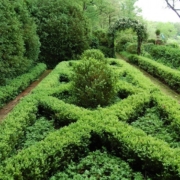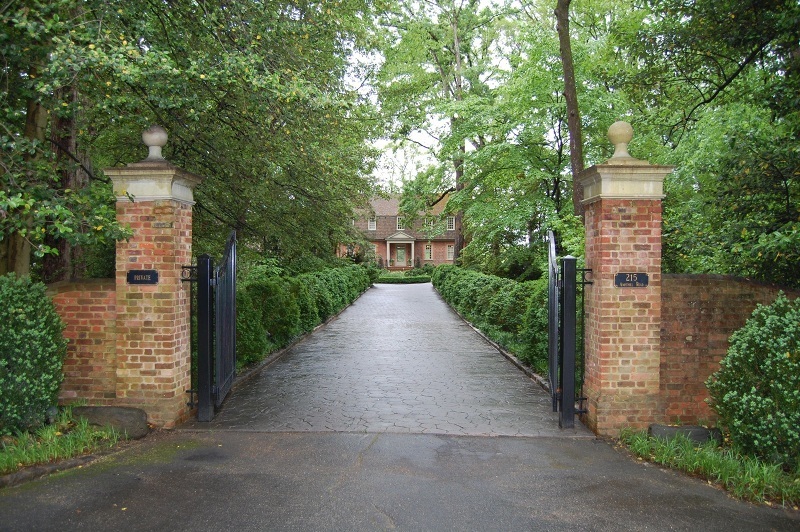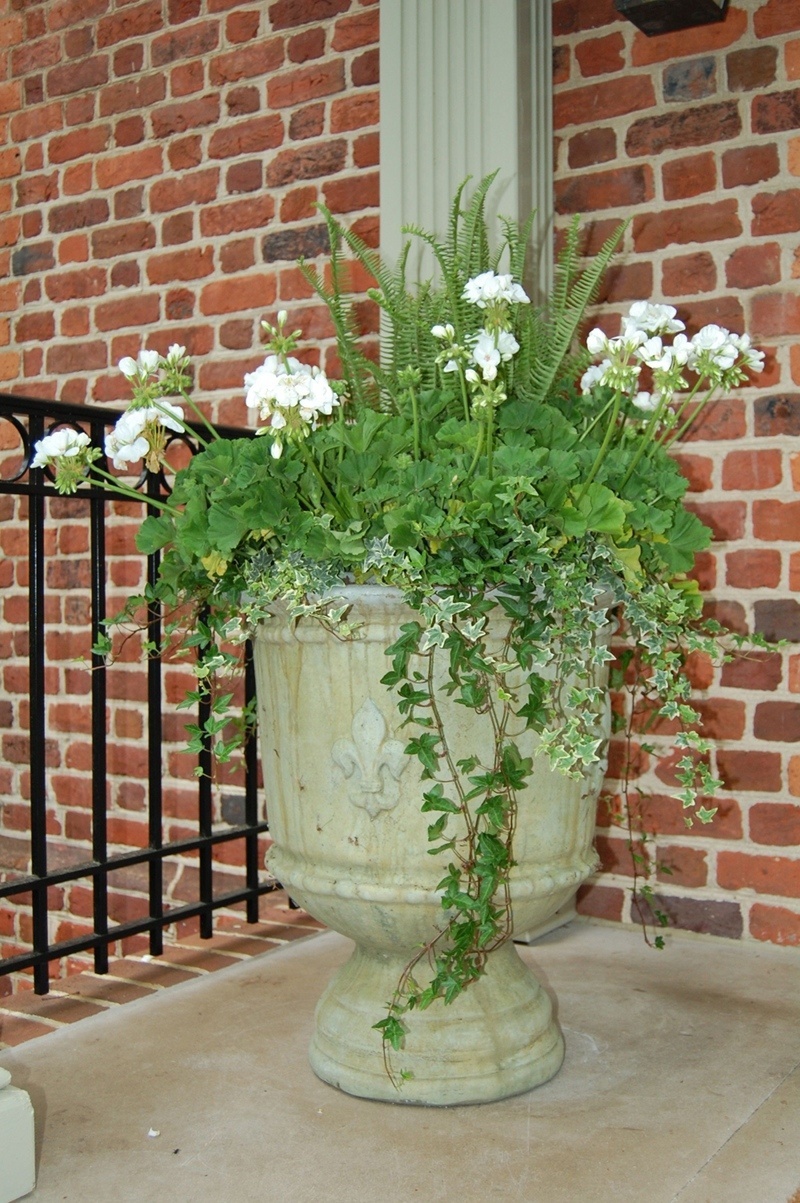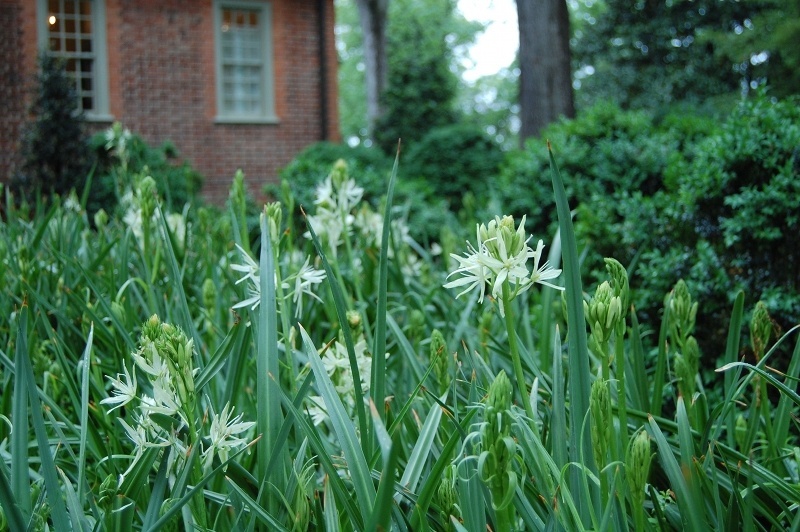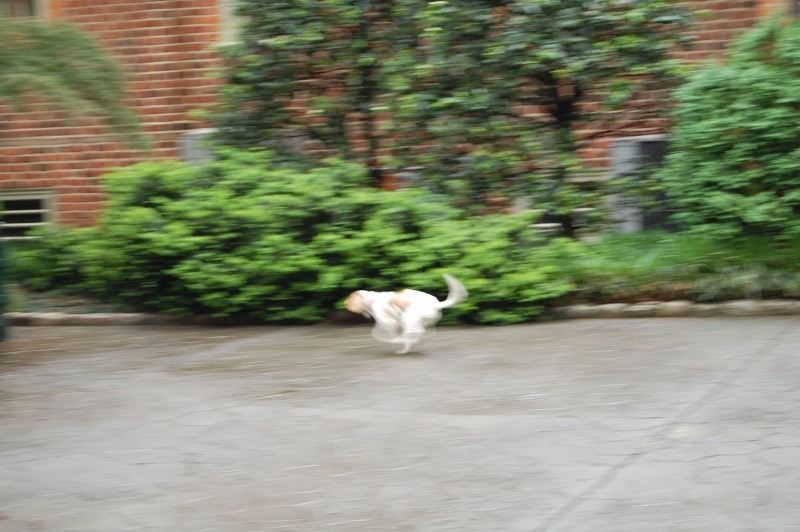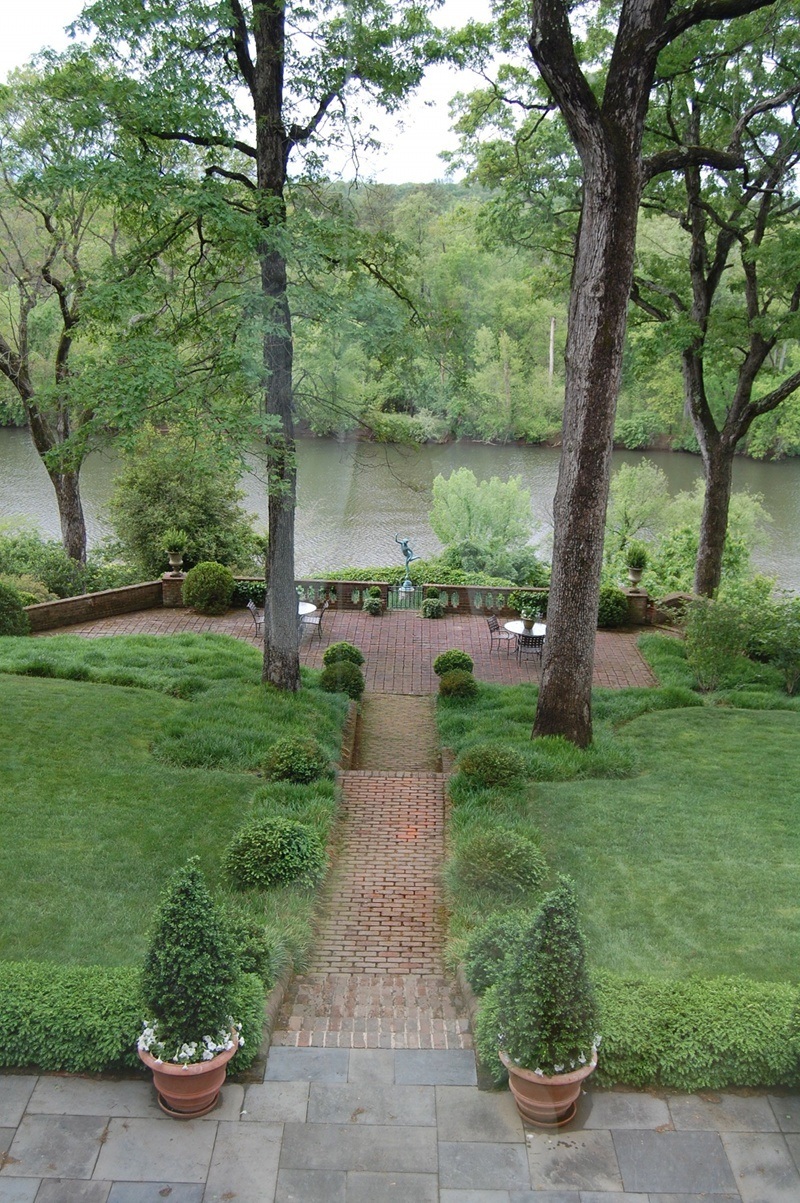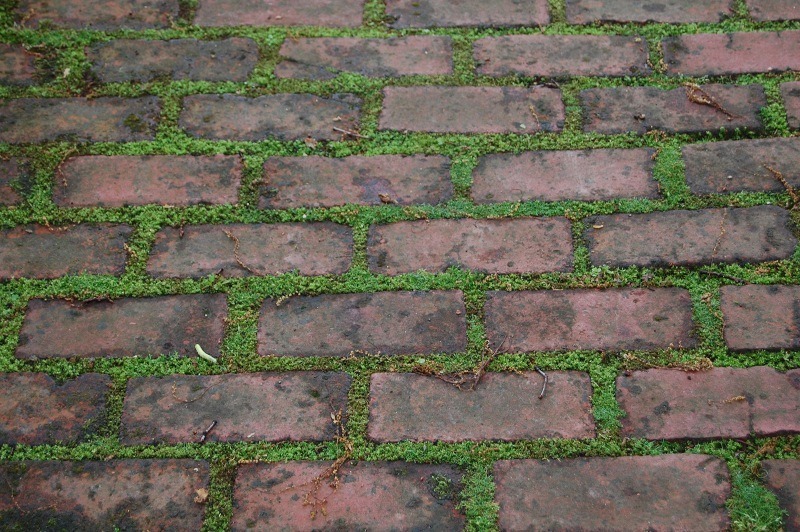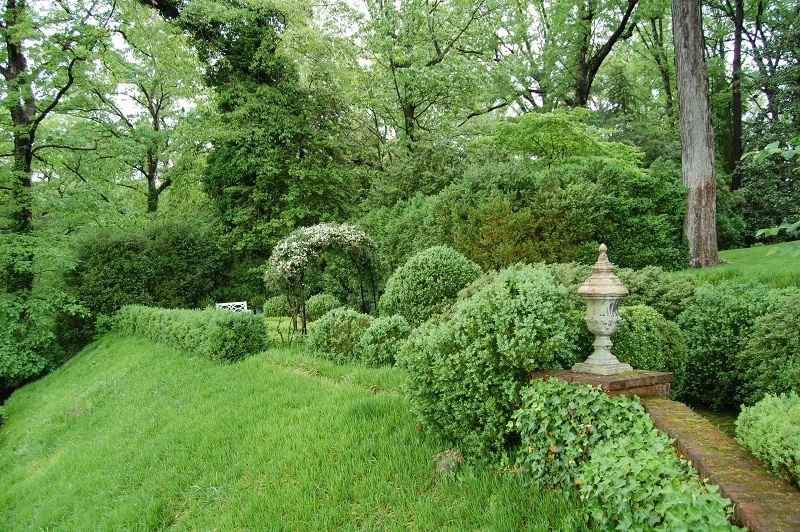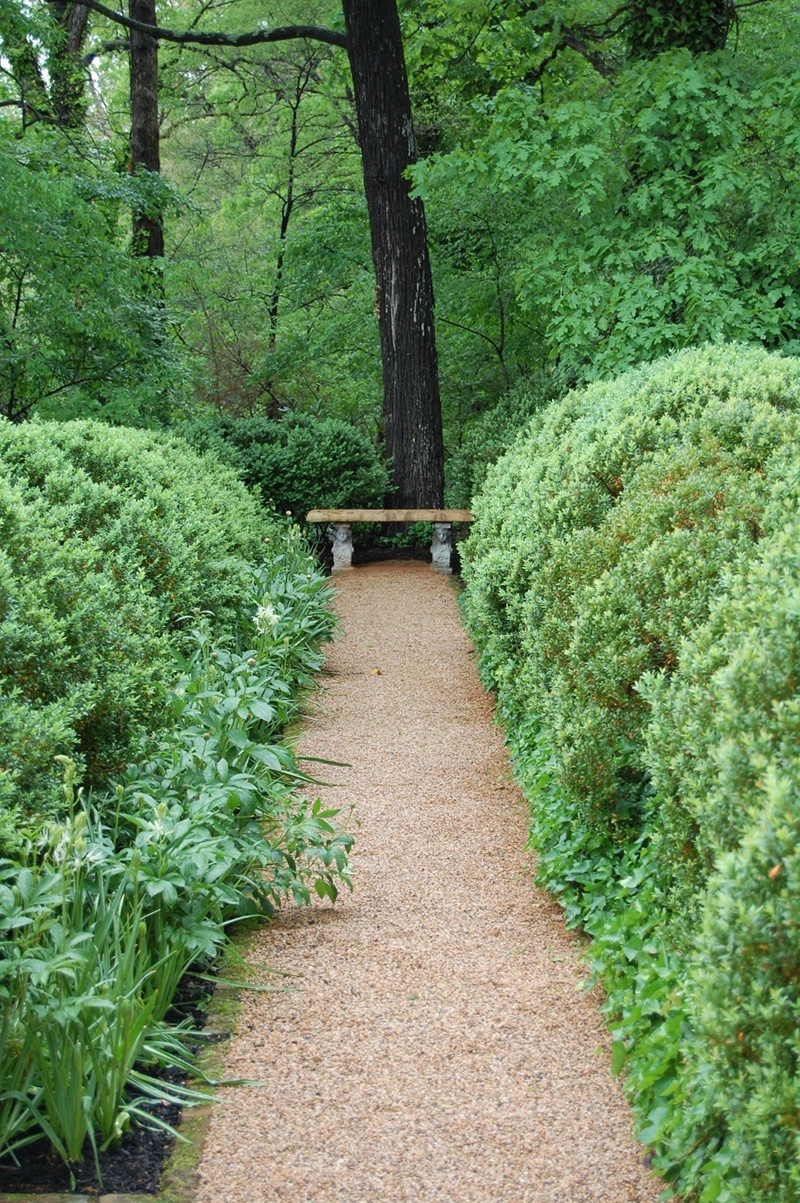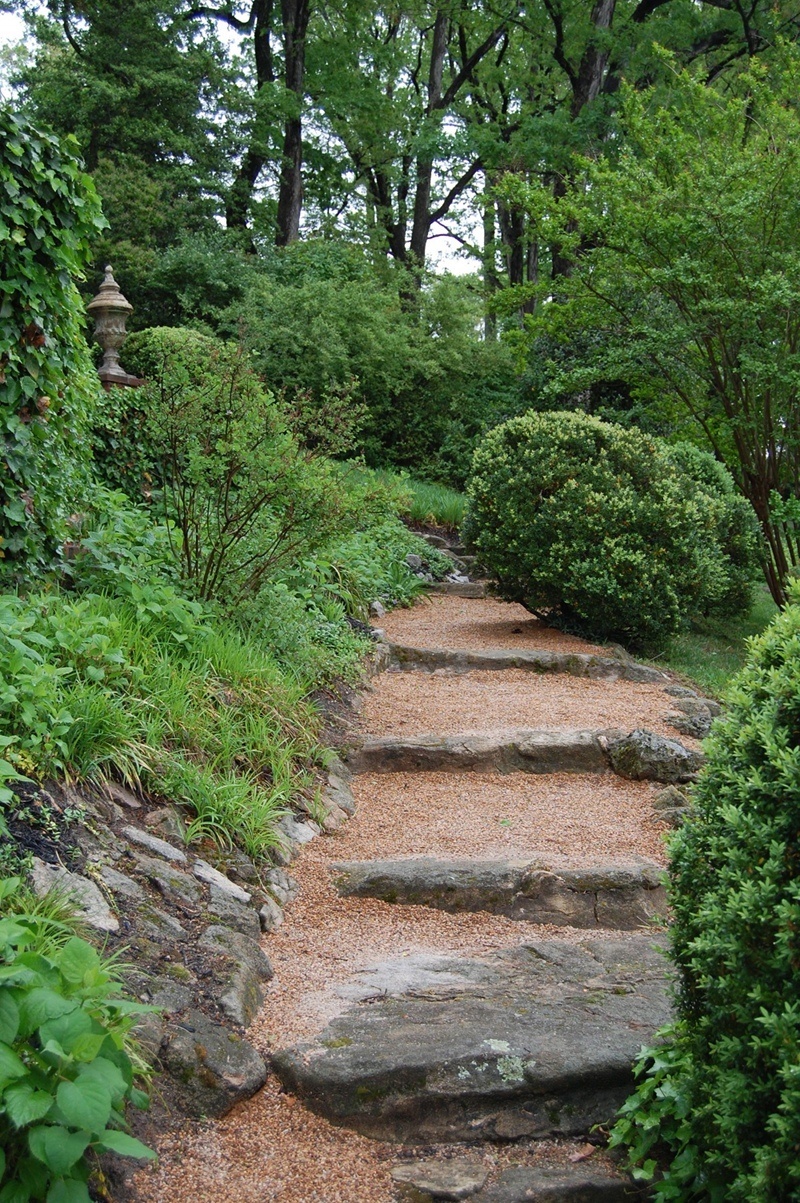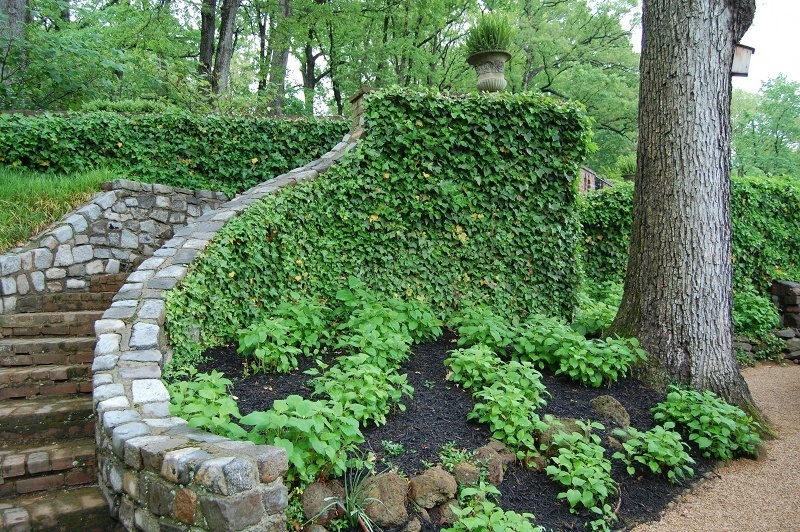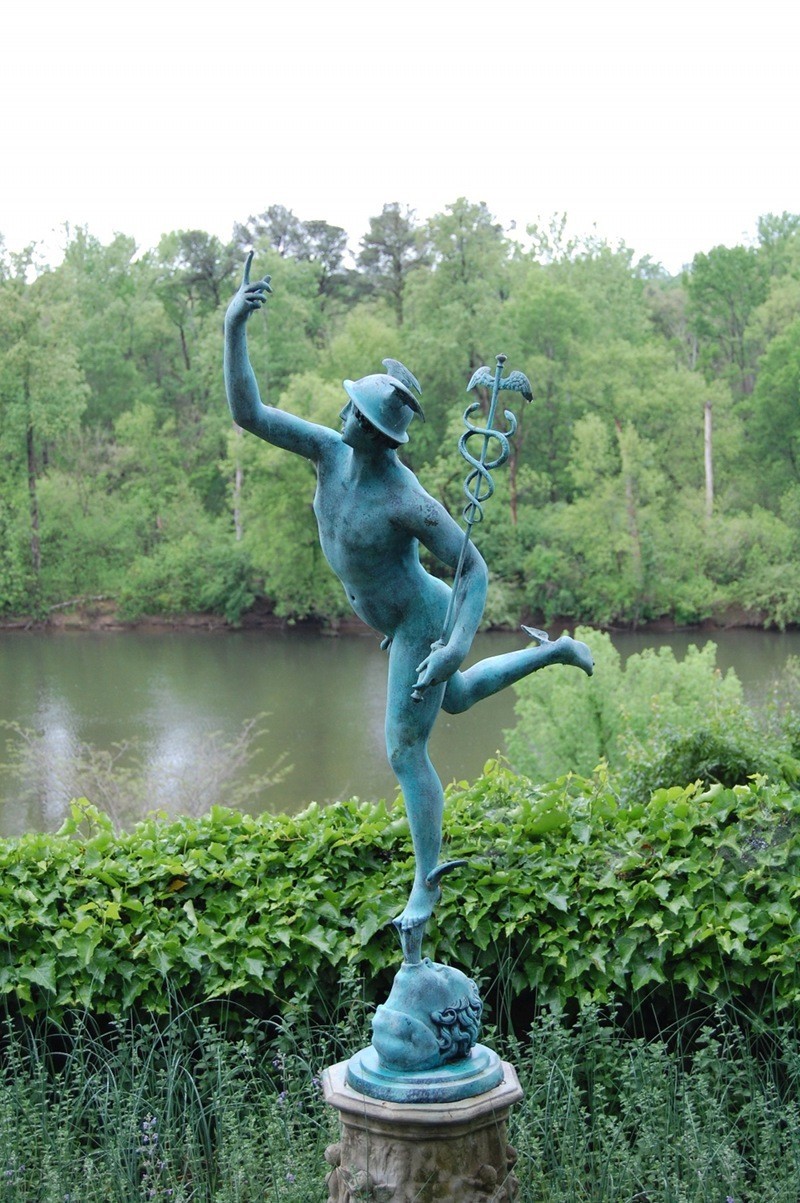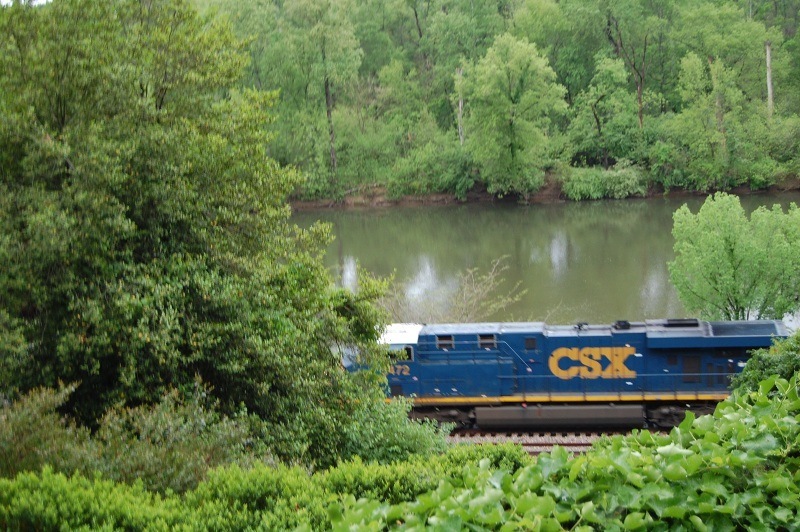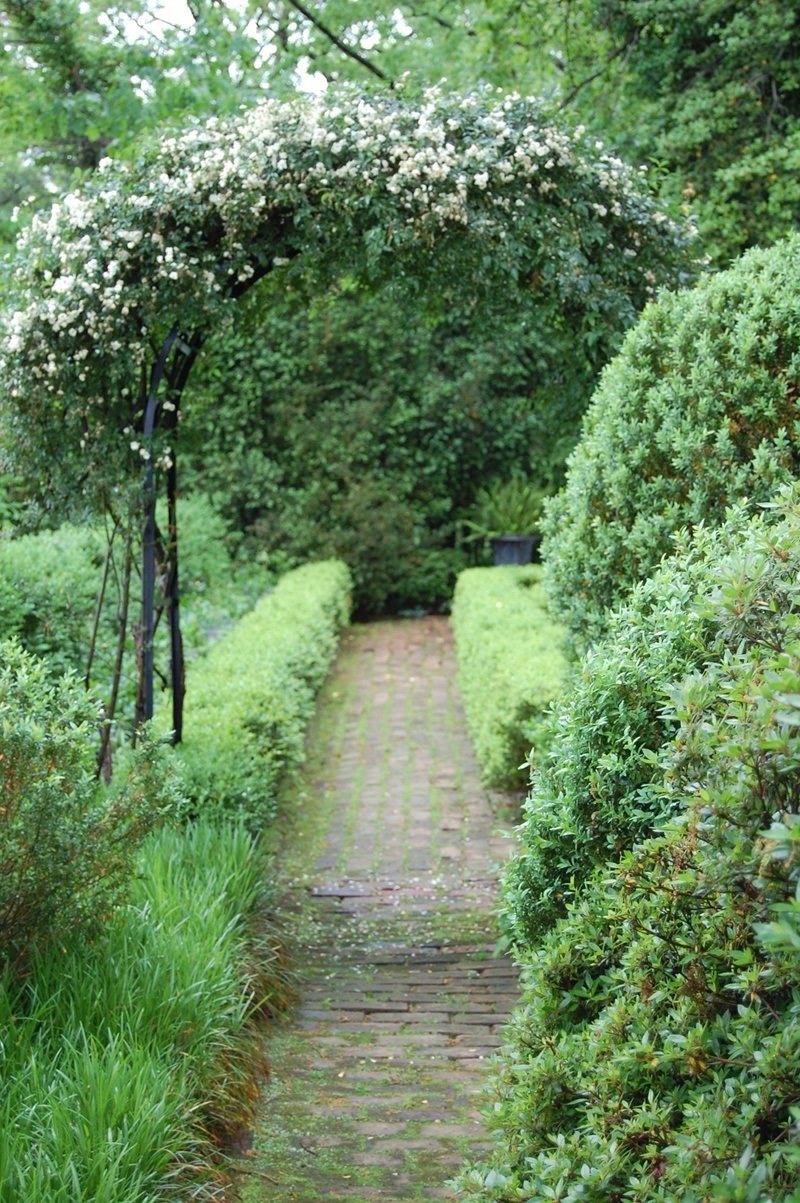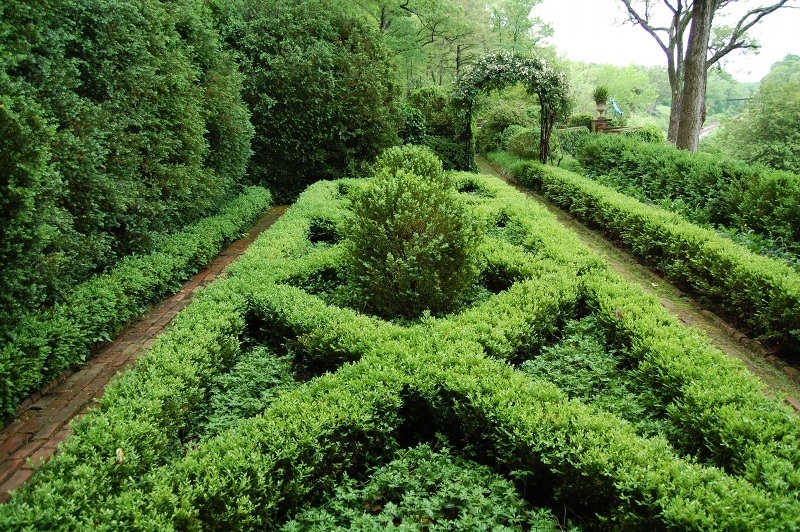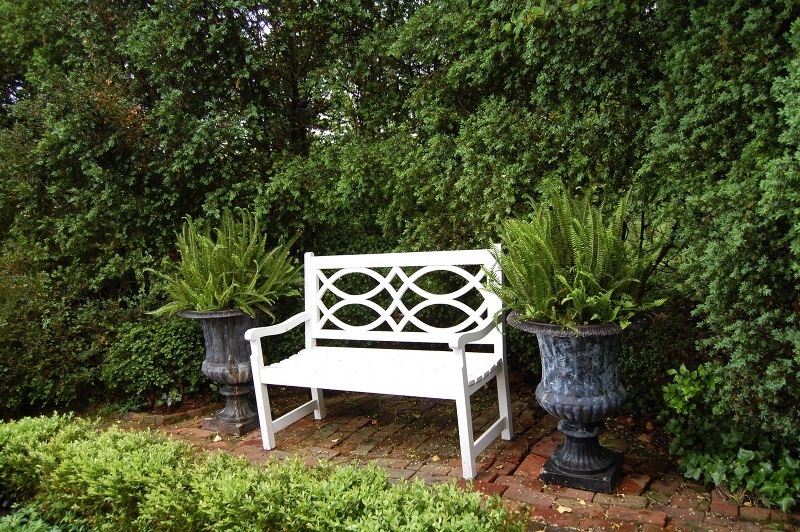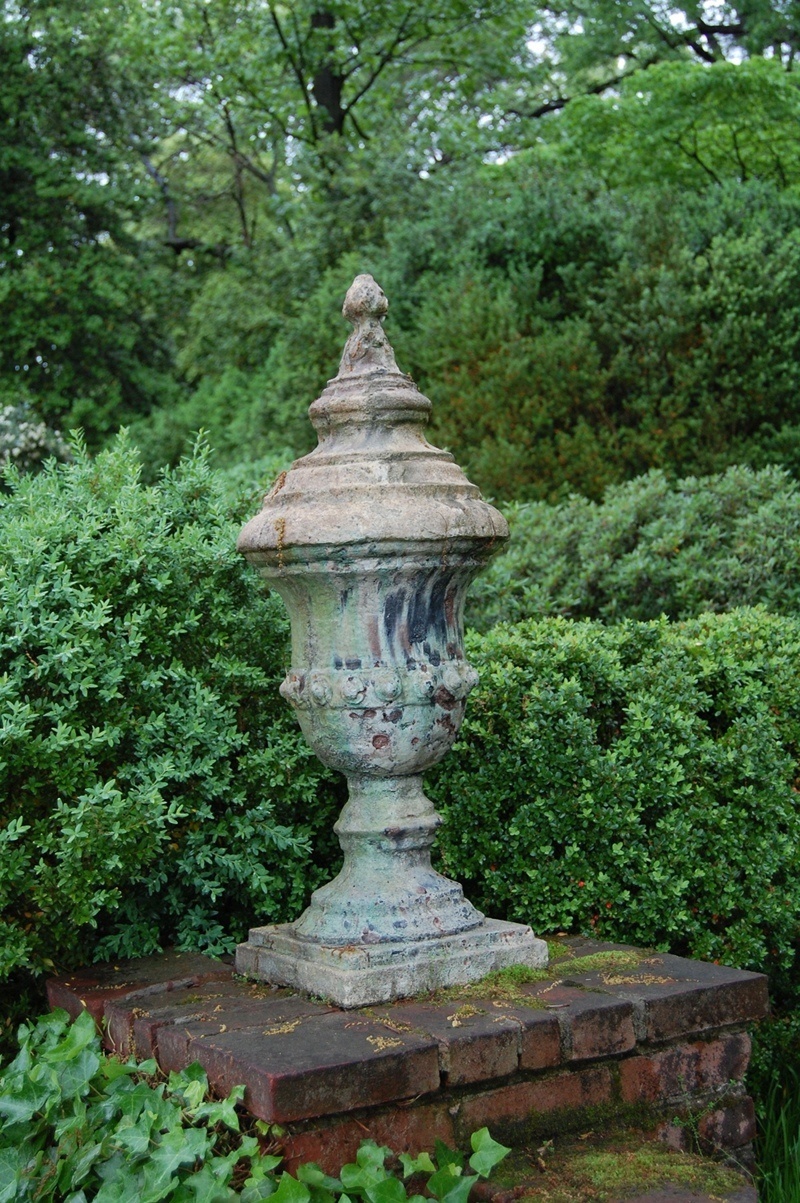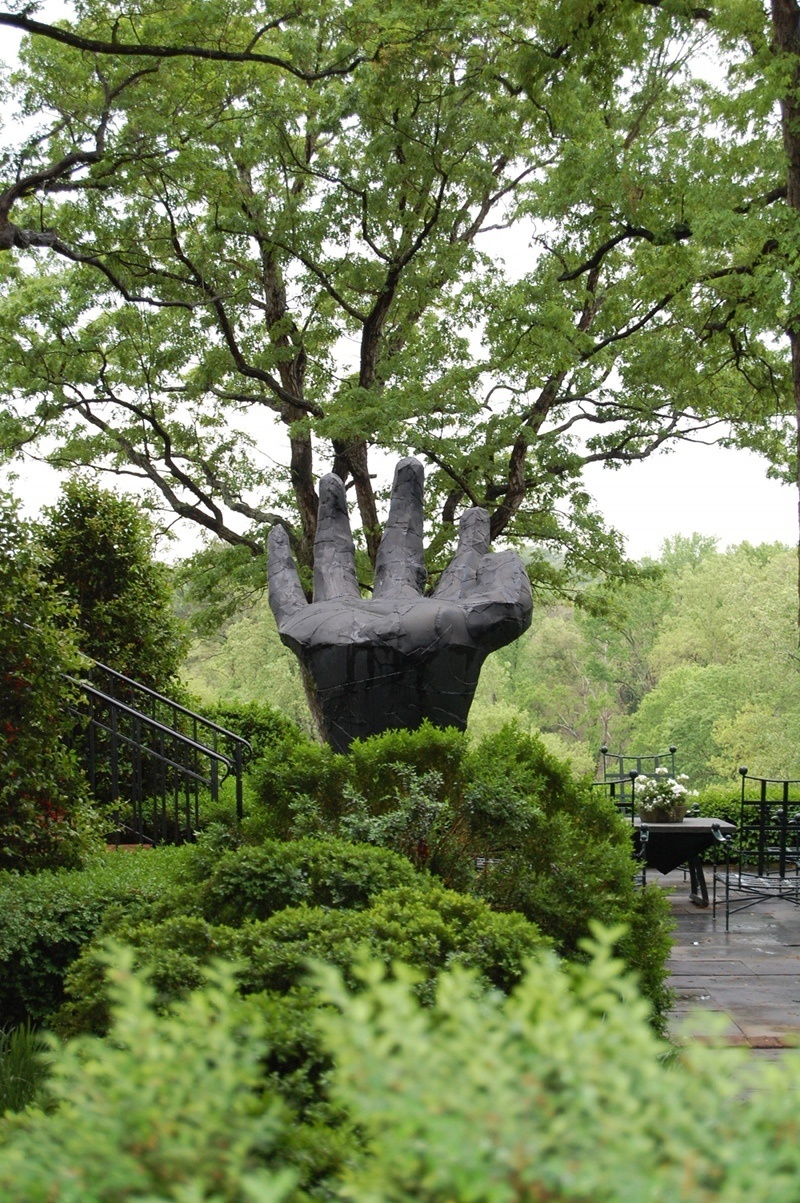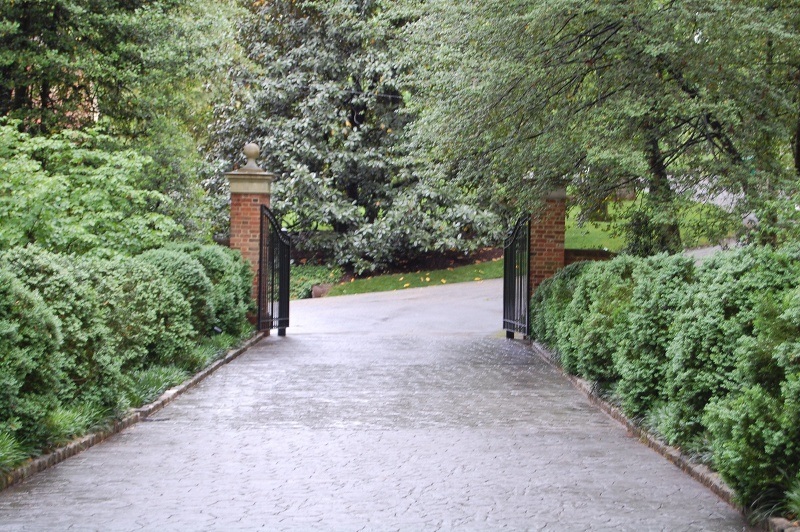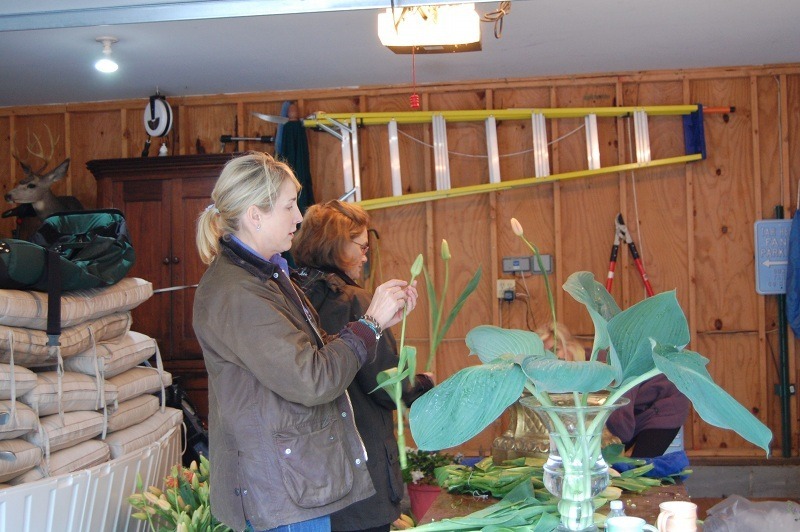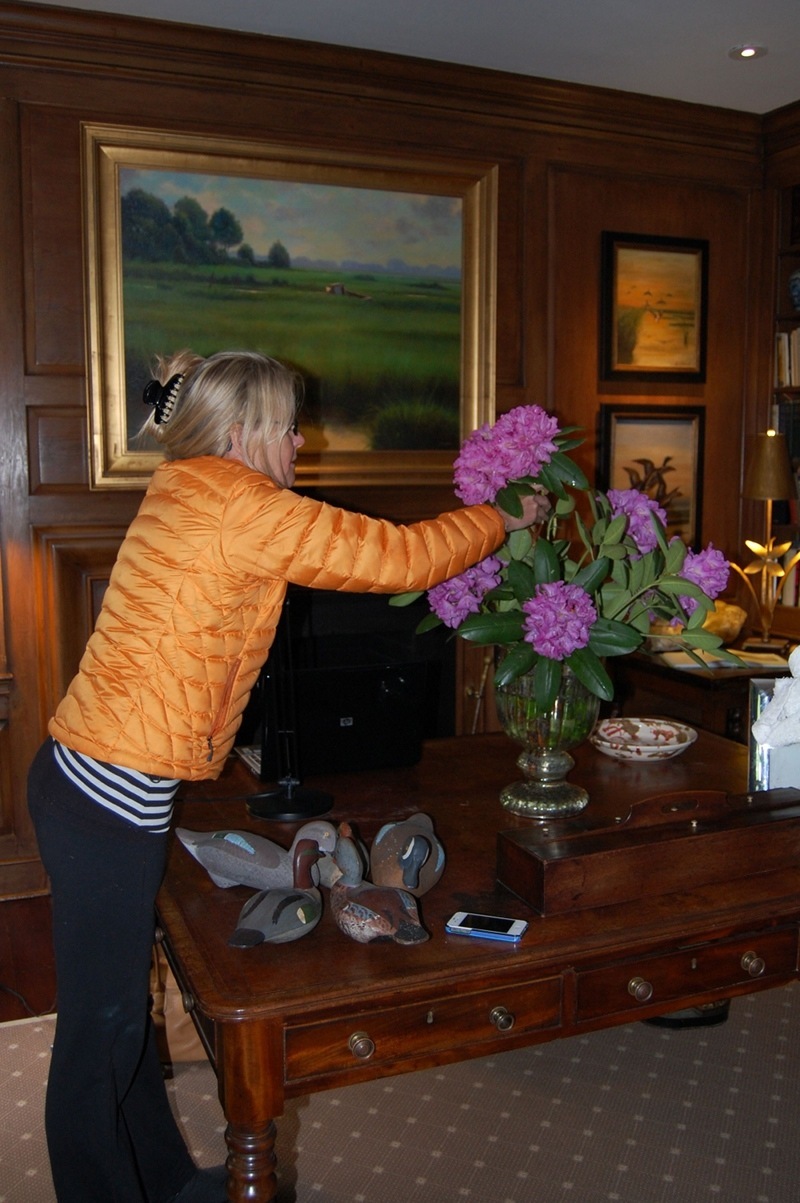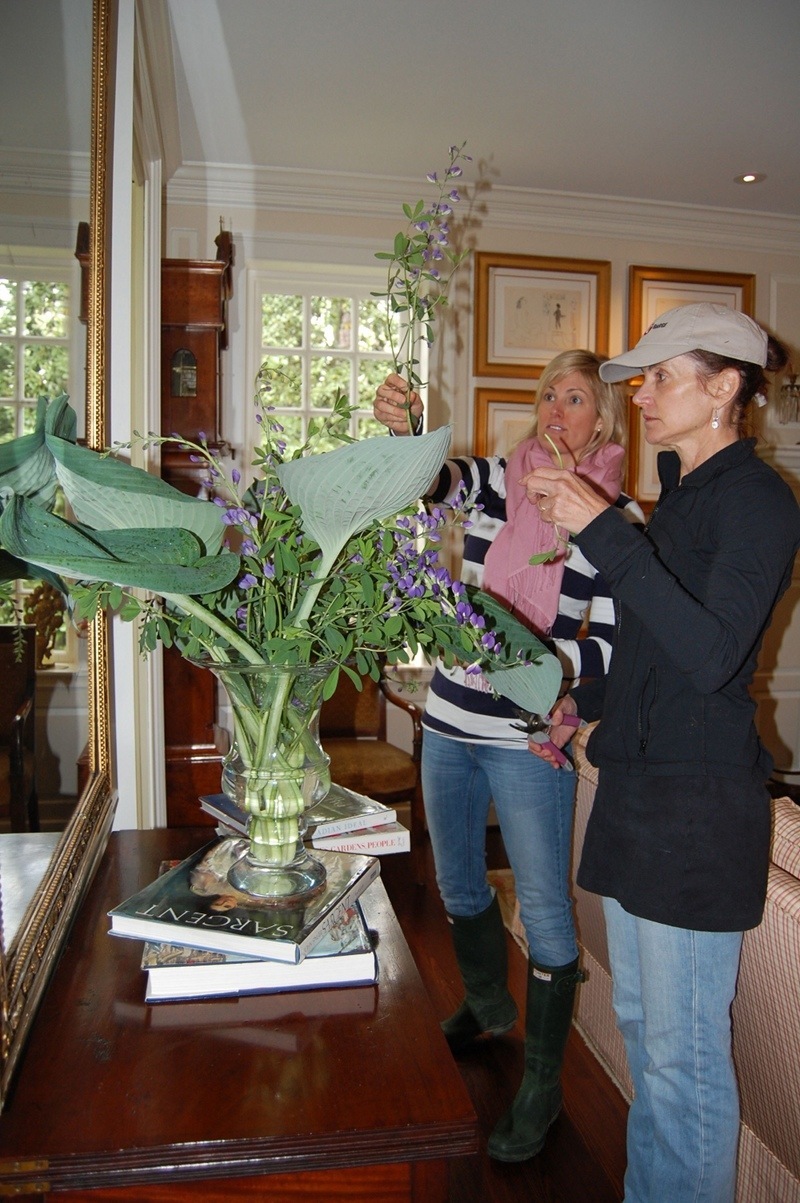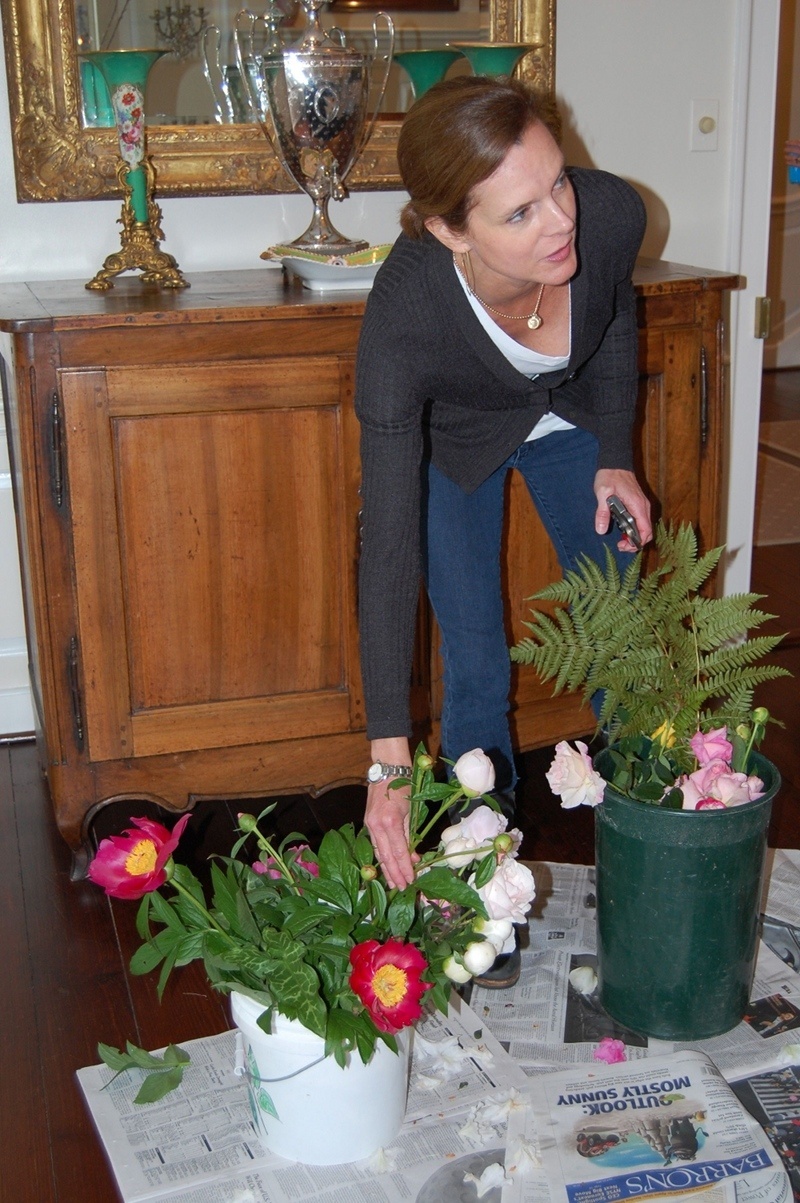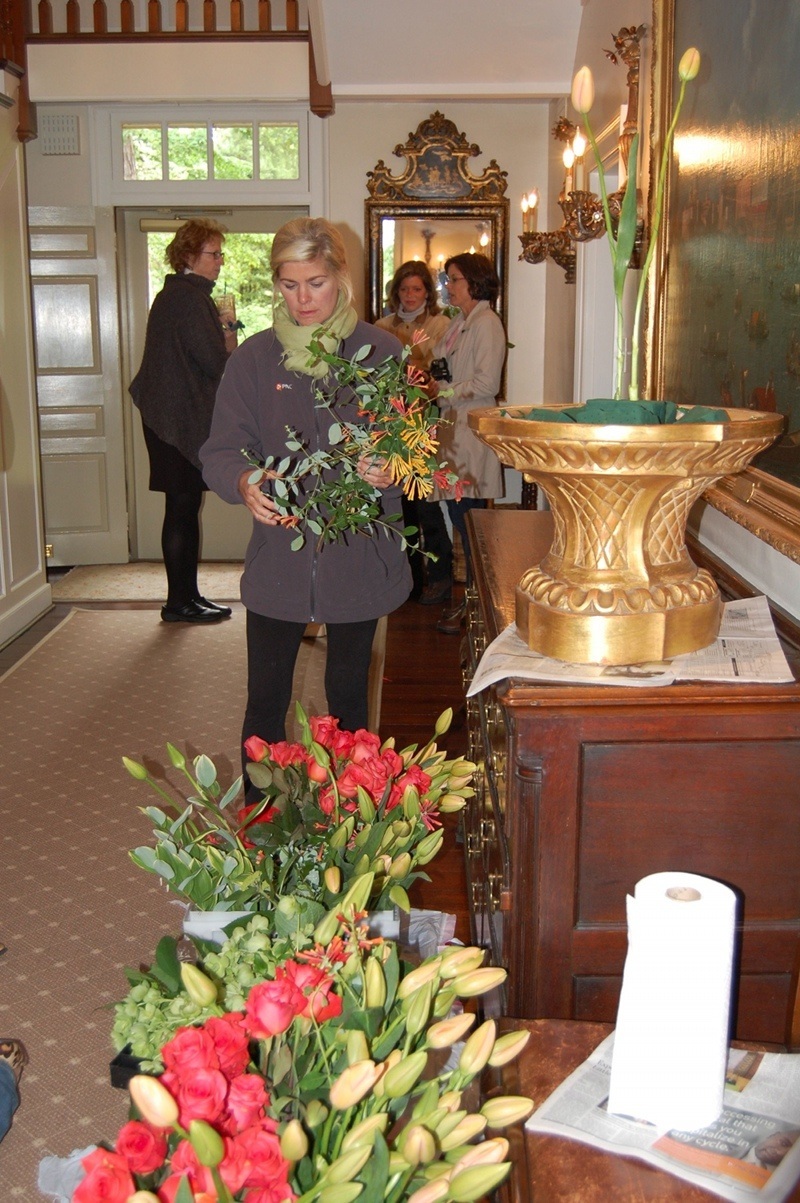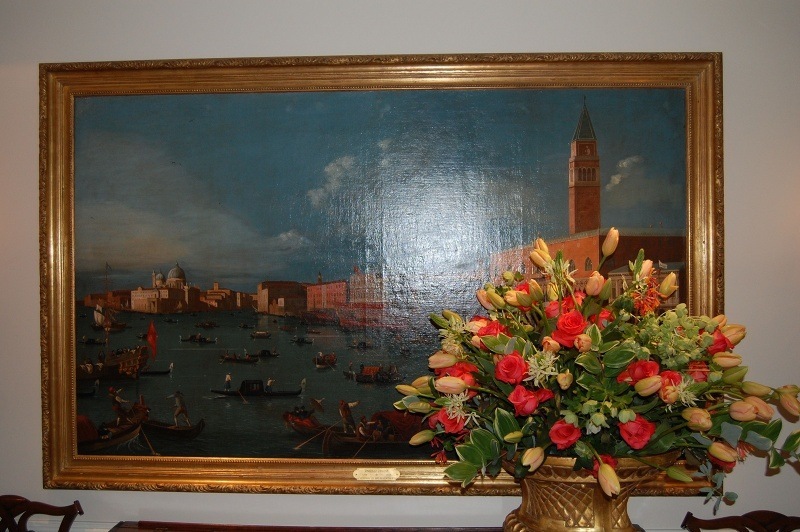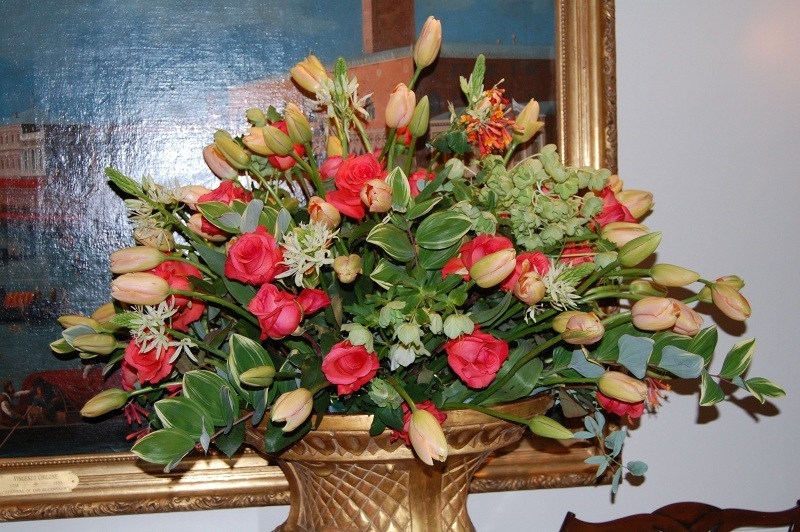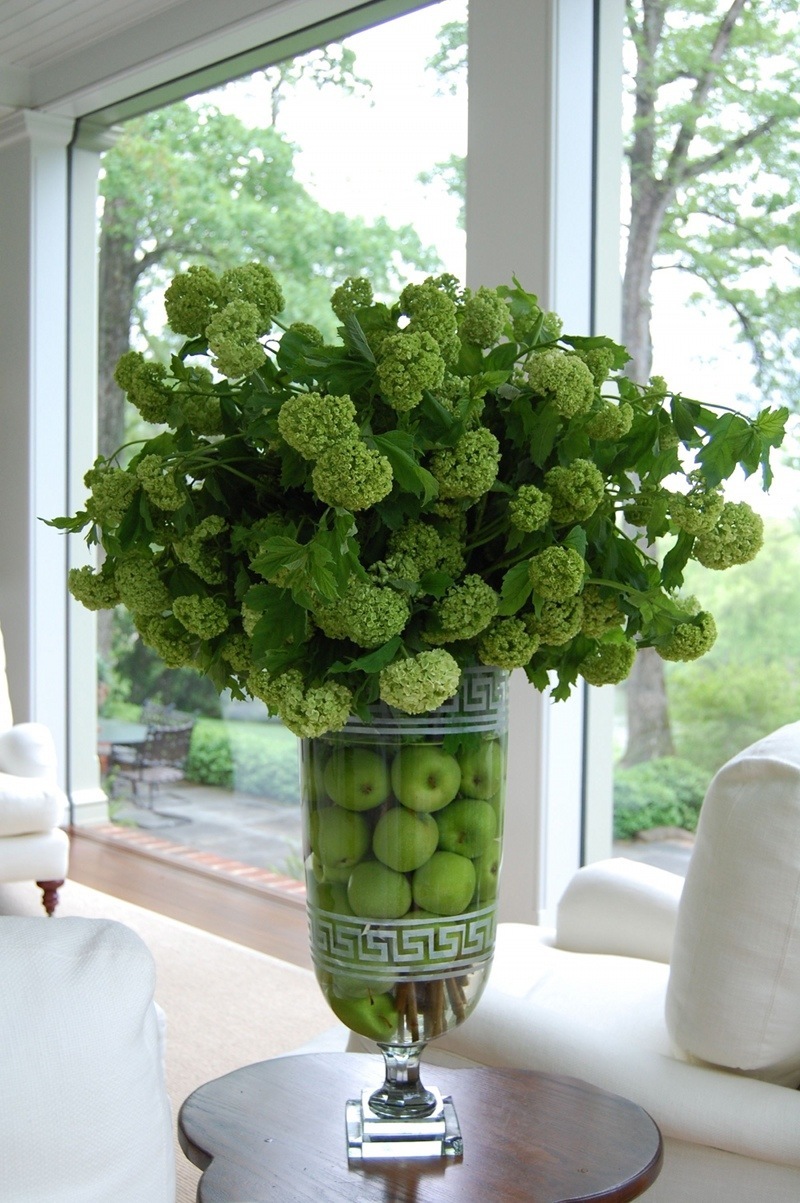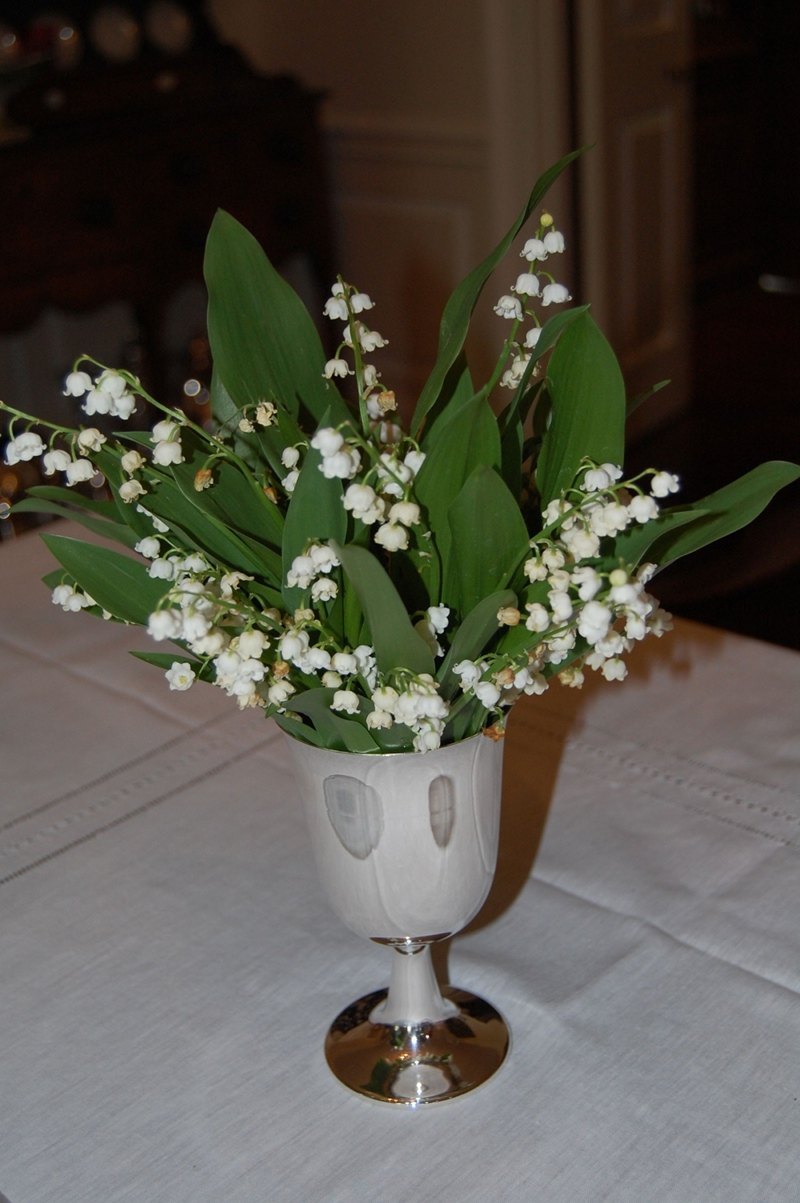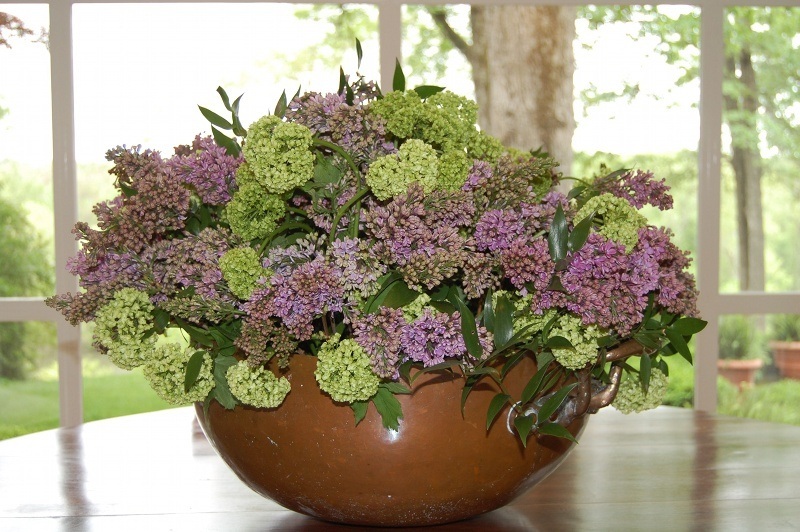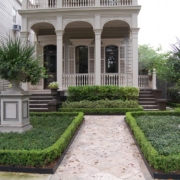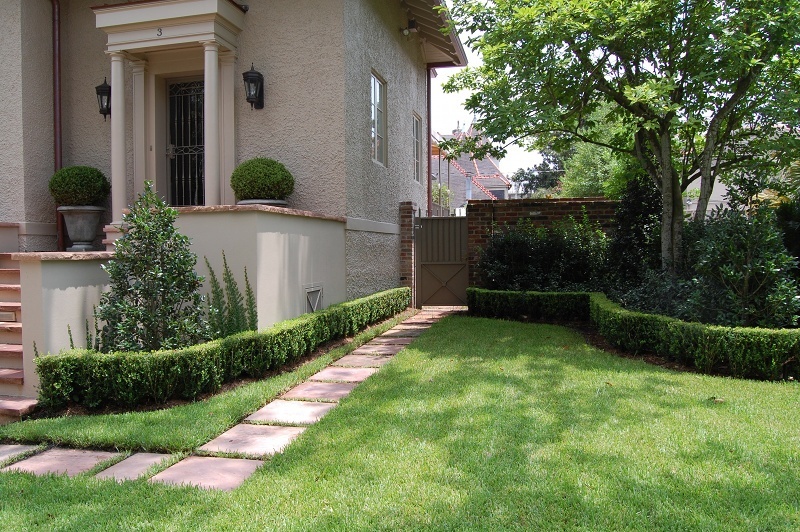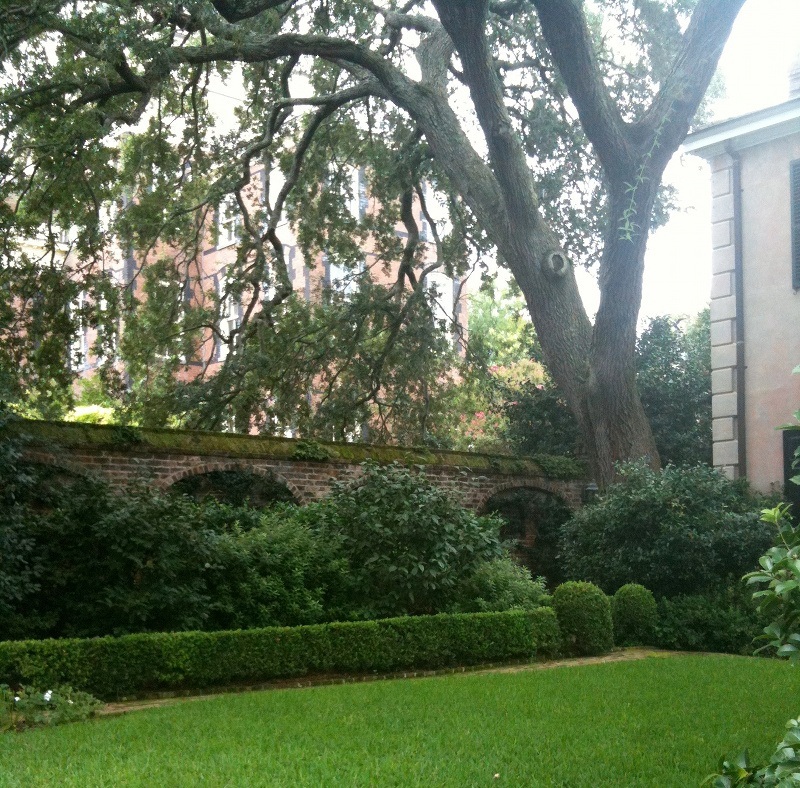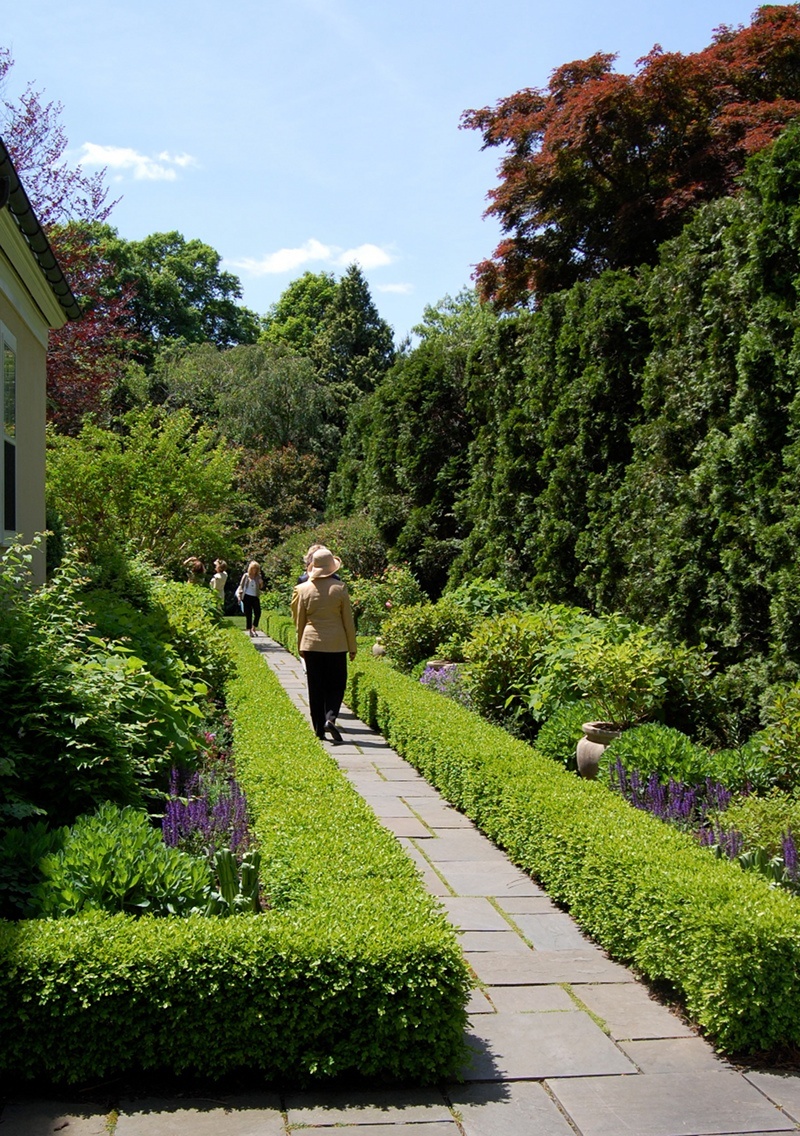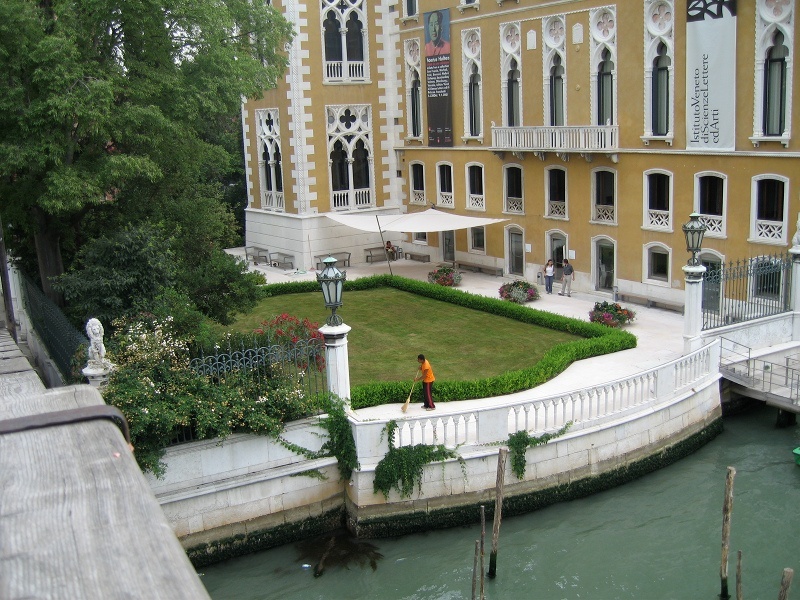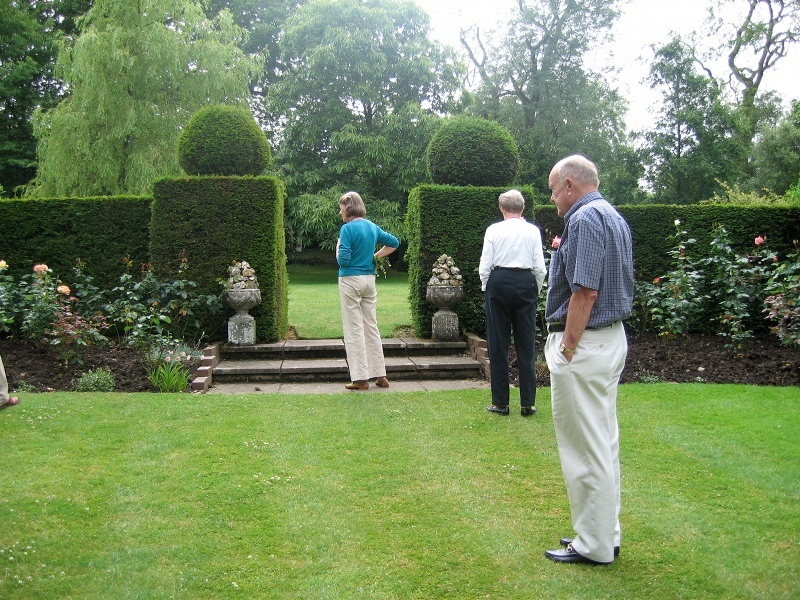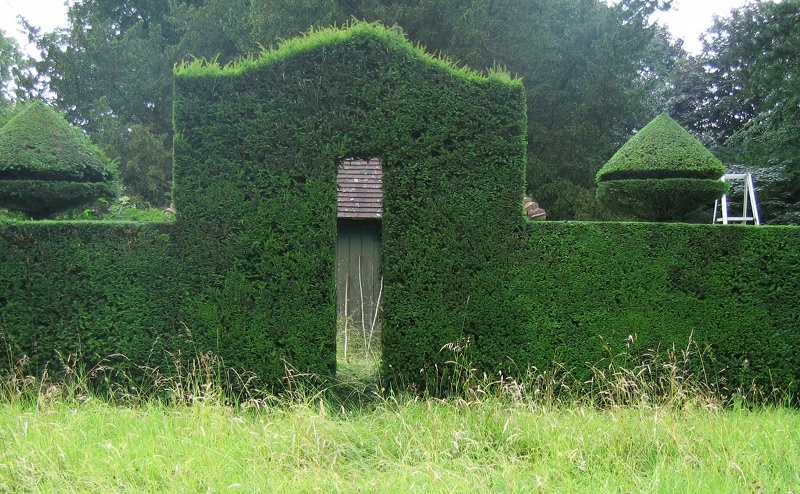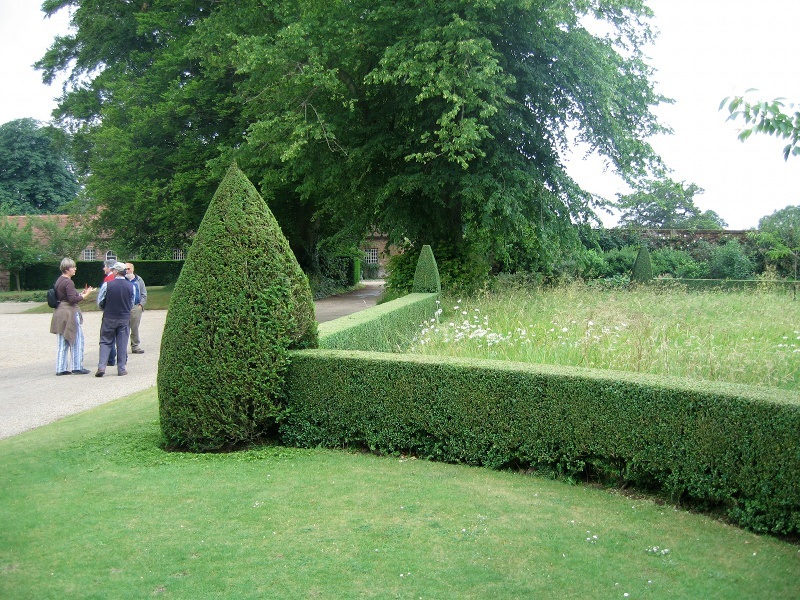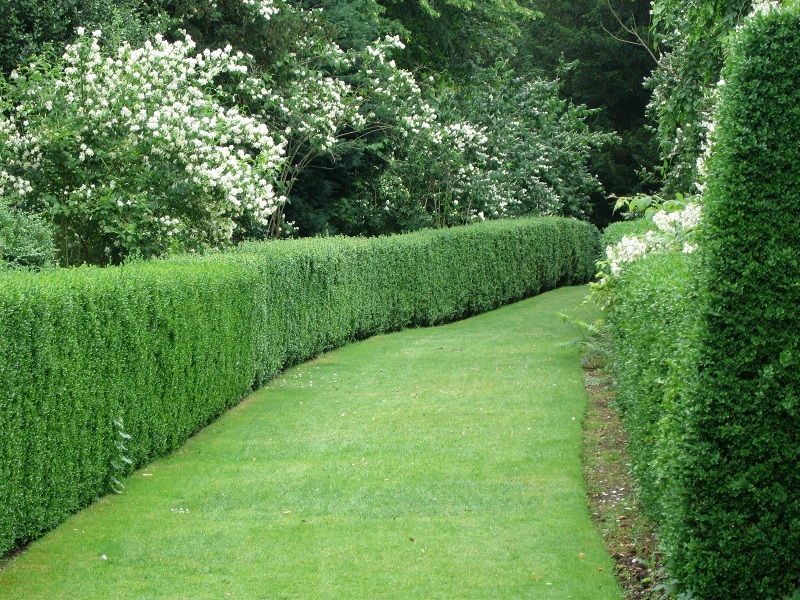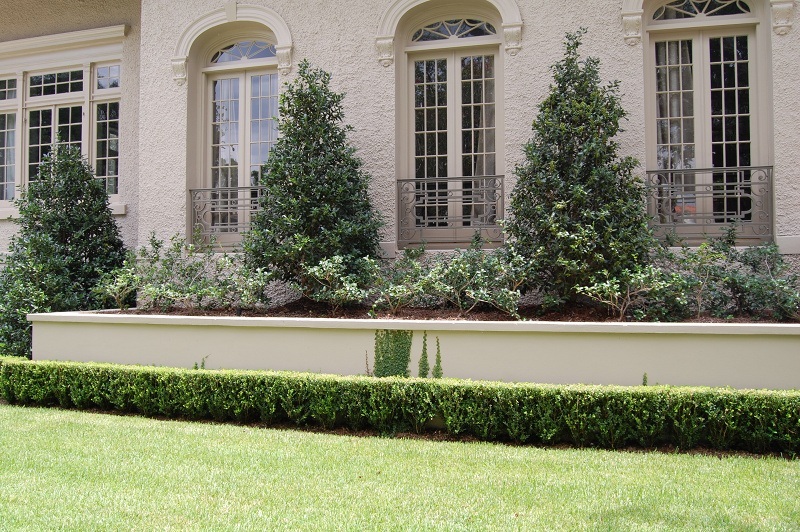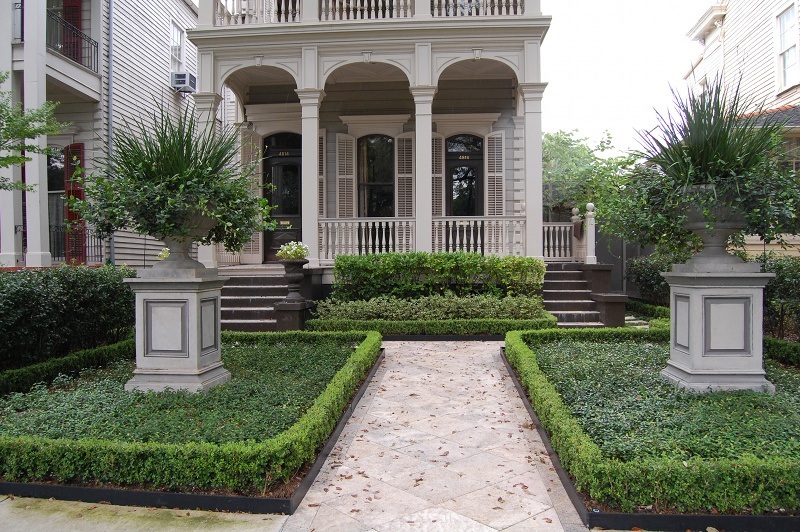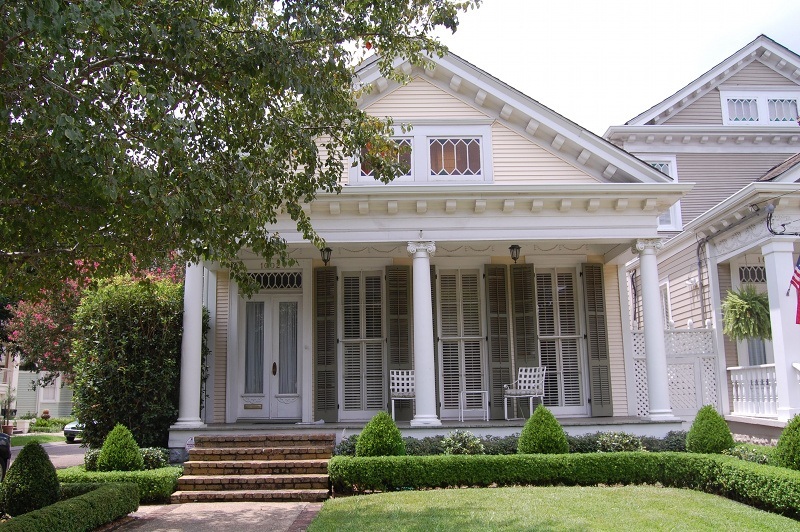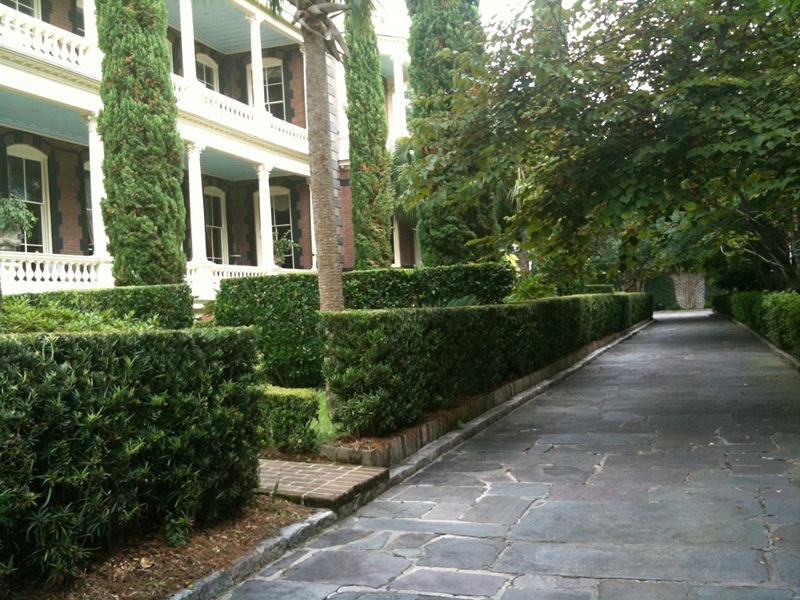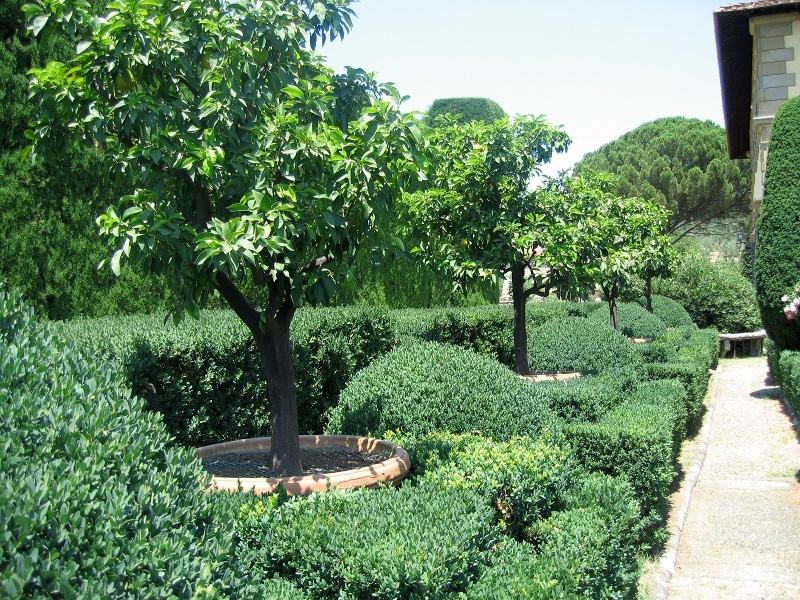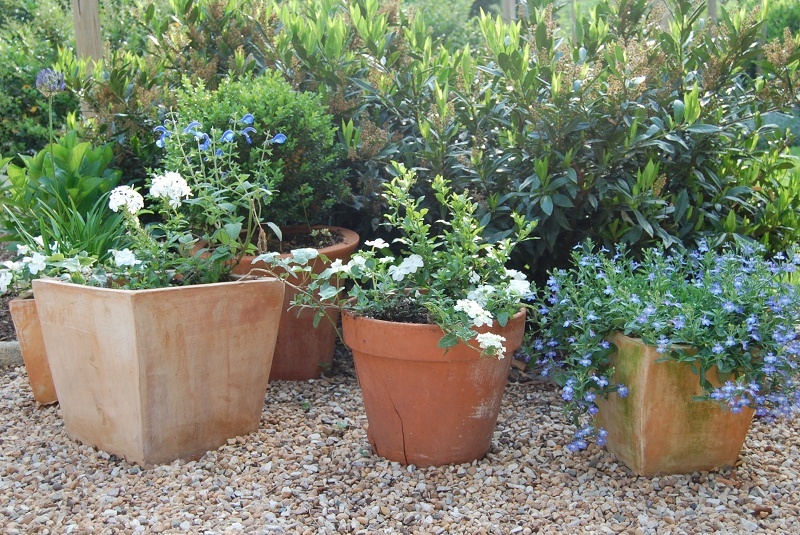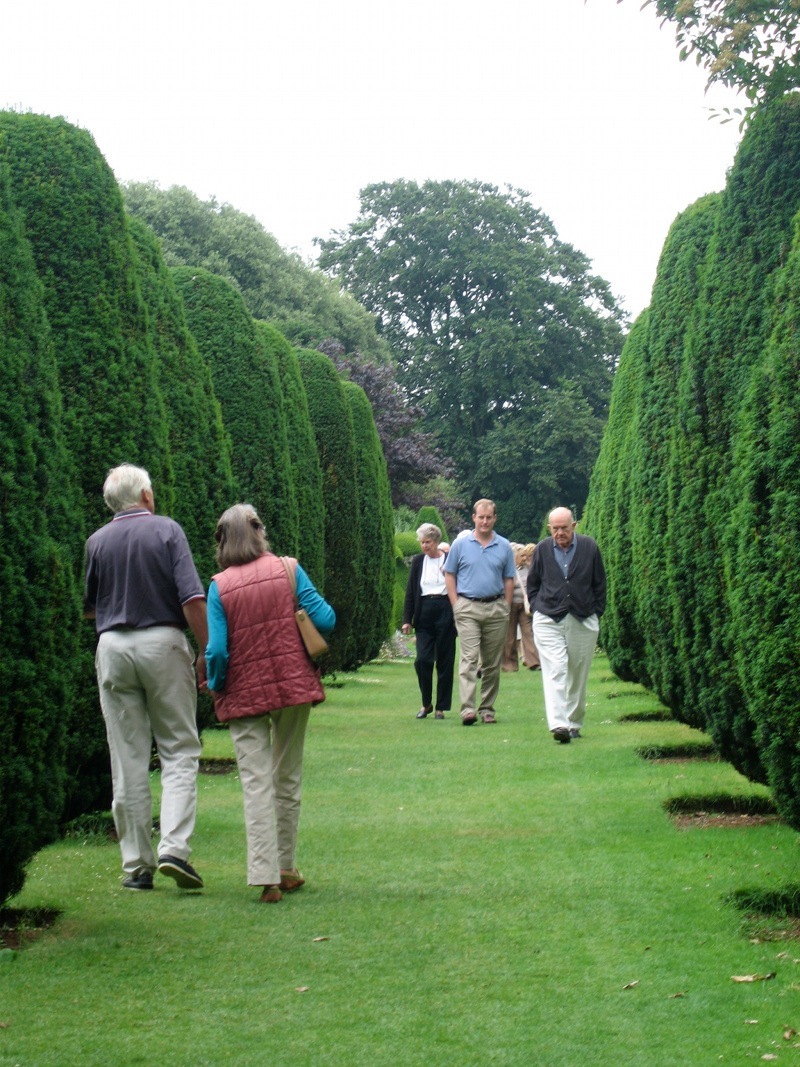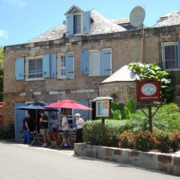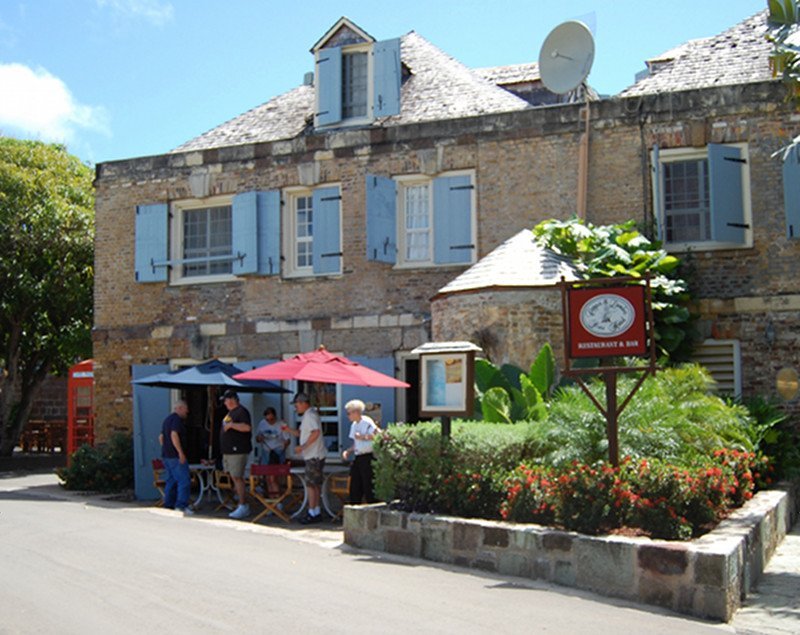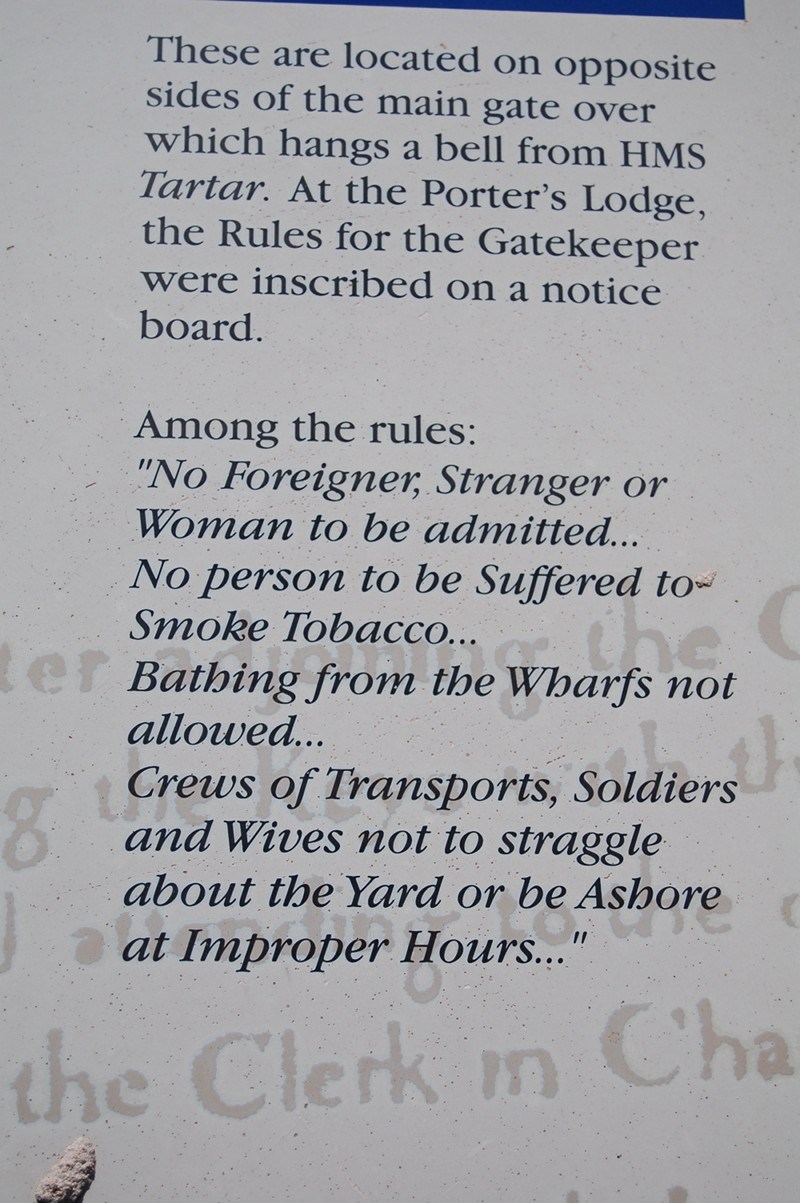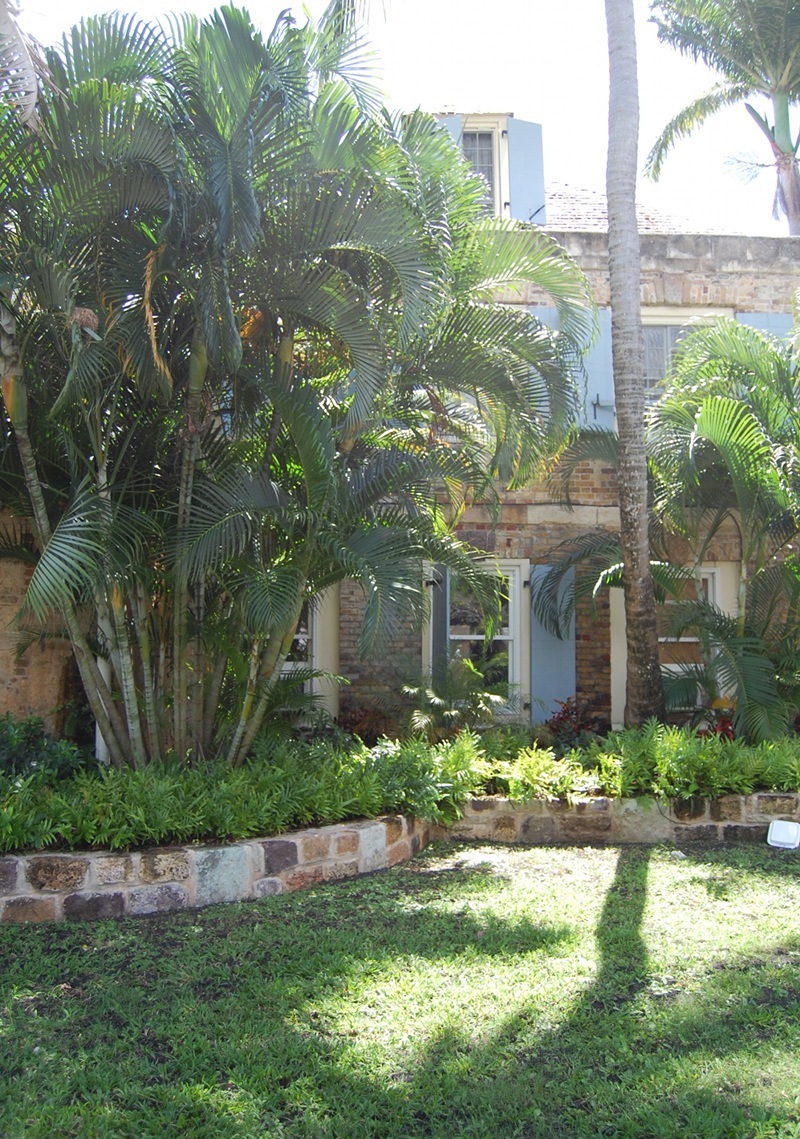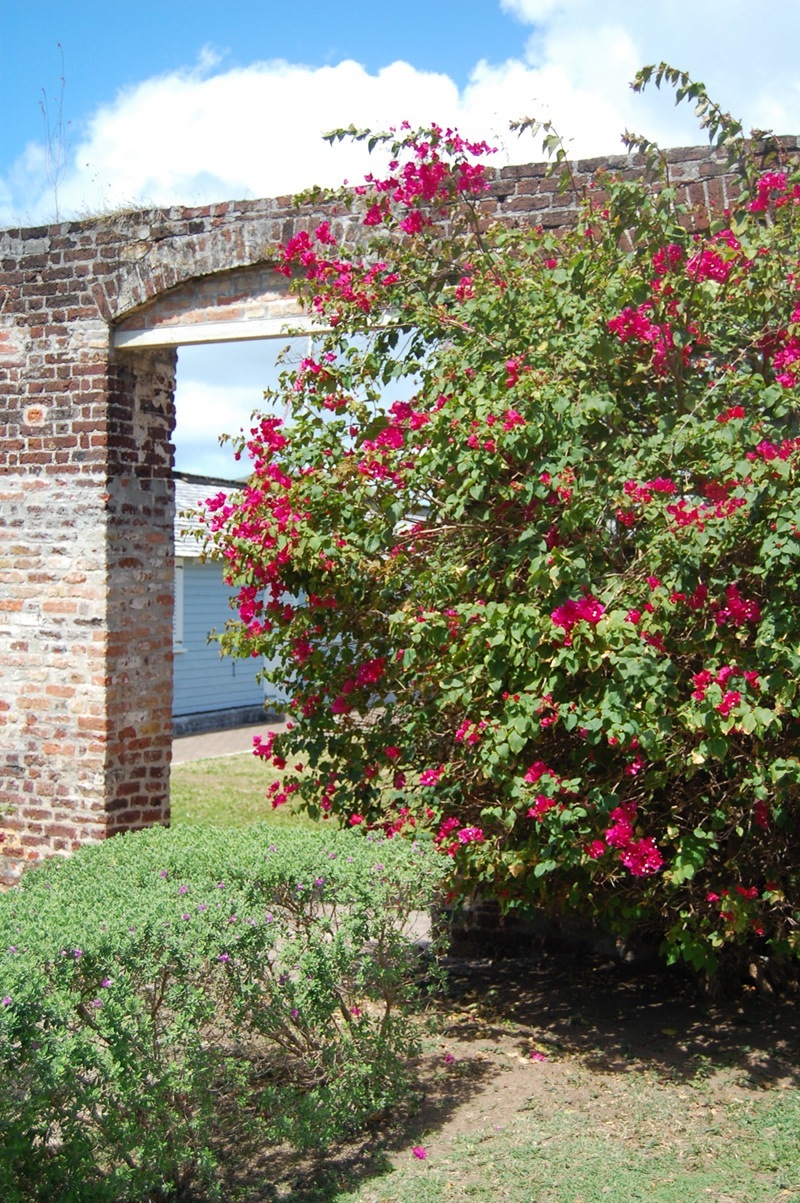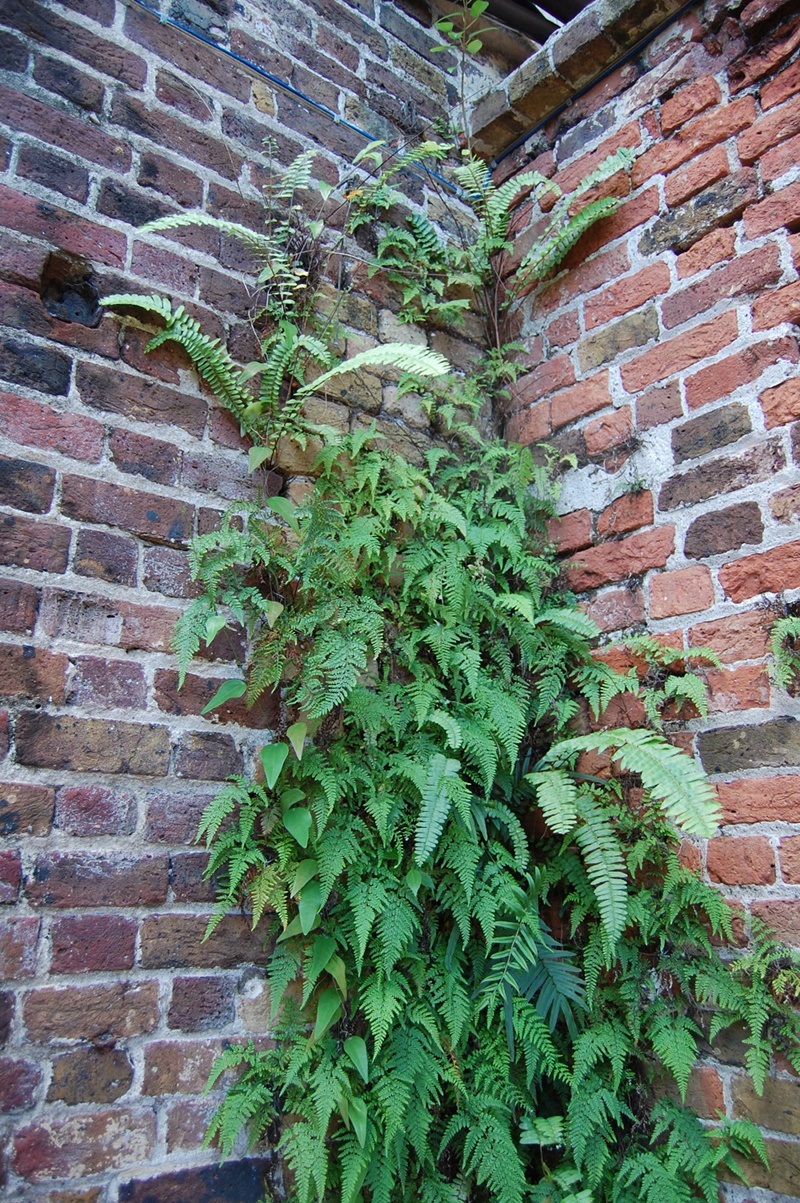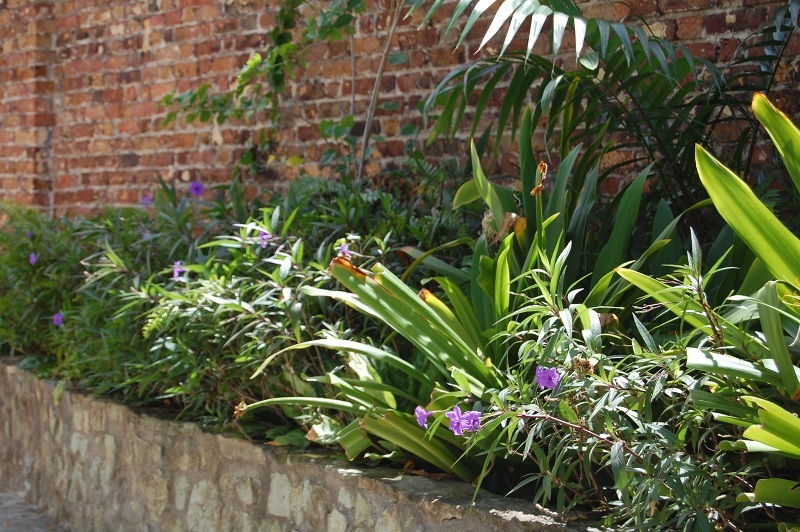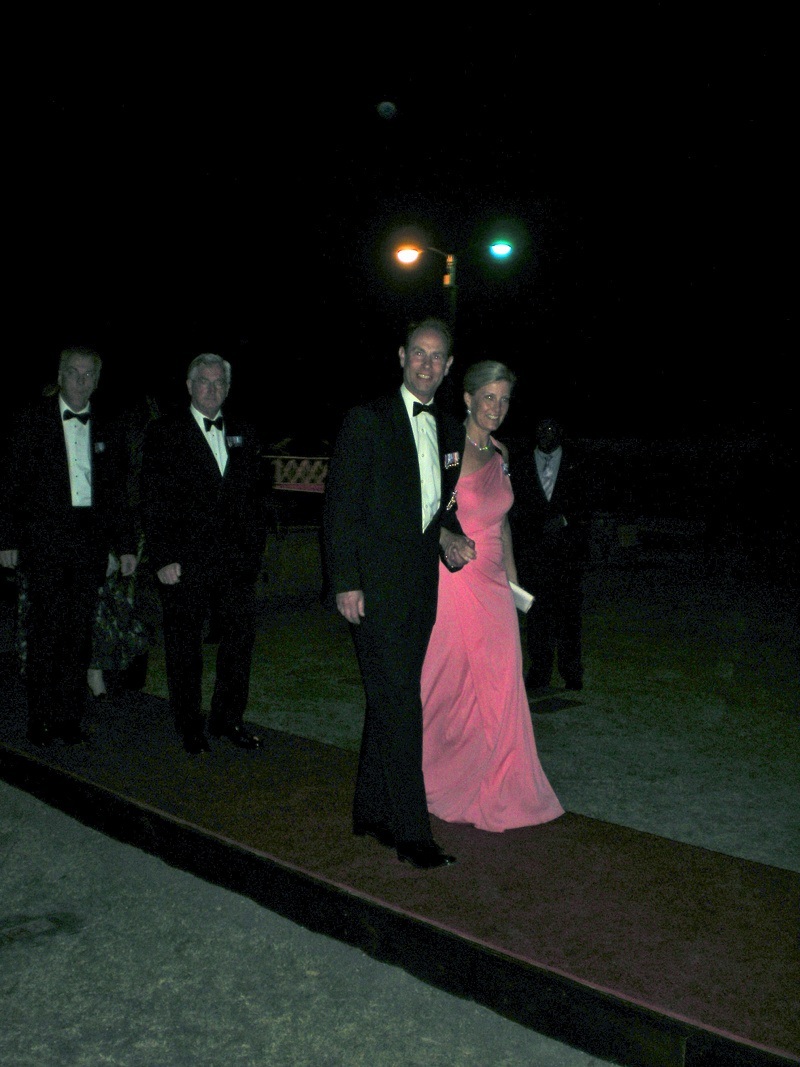A GARDEN GEM ALONG THE JAMES RIVER
THE GARDEN CLUB OF VIRGINIA KICKS OFF THE RICHMOND TOUR WITH A GARDEN THAT MARRIES CLASSICAL PRINCIPLES AND A NATURAL SETTING
Martee and Charles Johnson graciously opened their home and garden for the Garden Club of Virginia’s Historic Garden Week Tuesday, April 24. Proceeds from Garden Week tours held throughout the Commonwealth this week are used to restore and preserve Virginia’s historic gardens.
The urns flanking the front door are planted simply with white Geranium, green and variegated Ivy and Ferns.
Camassia leichtlinii bulbs are just beginning to bloom. Camassia, like almost all of the plants in the Johnsons’ gardens, are deer resistant.
Hatcher lives life in full blur.
Tuckahoe (you can call him Tucky) hasn’t been able to convince Hatcher that life is a marathon, not a sprint.
The garden is a magnificent example of allowing the site to dictate the design. Instead of heavily planting the garden with a riot of color, the Johnsons have used color judiciously, allowing the evergreen backbone to frame the breathtaking views of the James River and Williams Island beyond.
Landscape Architect Charles Gillette designed the original gardens, terracing the property and creating strong axial lines. The lower garden is dominated by a large terrace overlooking the river. The upper terrace, random-width Bluestone bordered by a hedge of Green Gem Boxwood (Buxus microphylla ‘Green Gem’), was designed by Charlottesville based Landscape Architect Charles Stick. Stick masterfully incorporated his own classically designed terraces, walkways and hedges into the existing Gillette landscape.
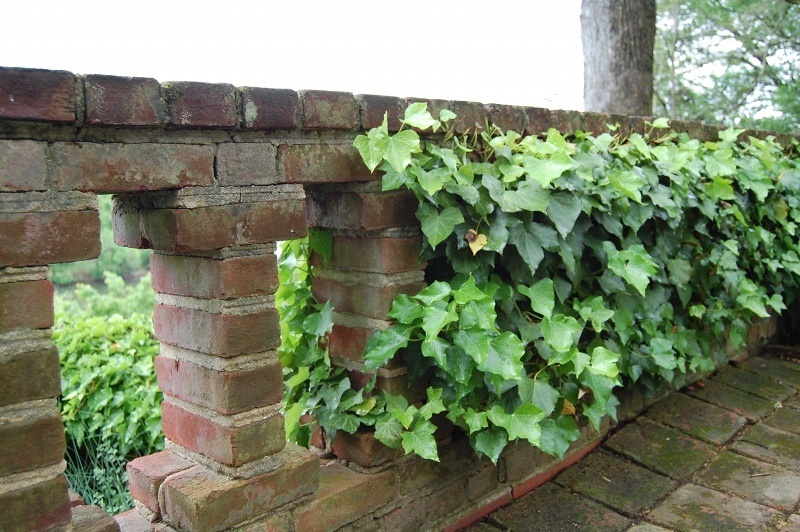 The pierced brick wall softened by Ivy is a classic Gillette feature.
The pierced brick wall softened by Ivy is a classic Gillette feature.
I love green mortar.
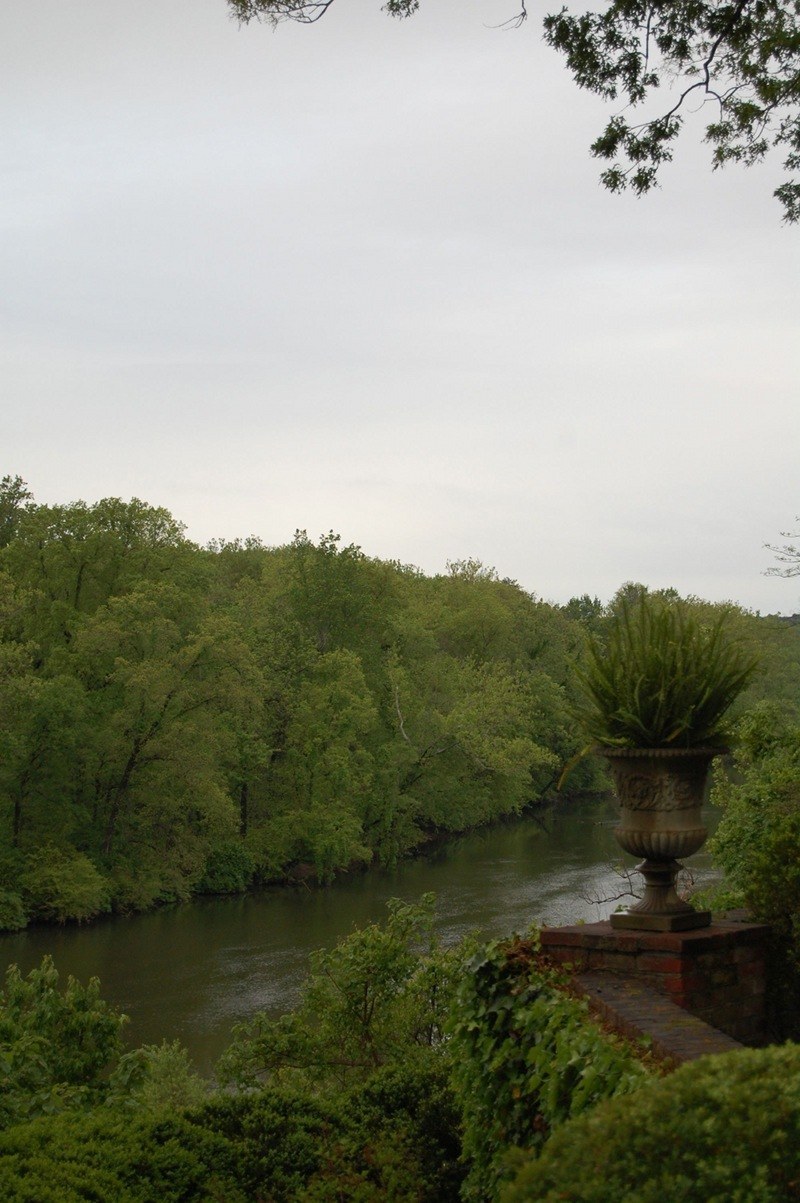 Under stormy skies the James River bisects Williams Island in front of the Johnsons’ home.
Under stormy skies the James River bisects Williams Island in front of the Johnsons’ home.
The strong evergreen backbone reinforces the formal layout of the walkways and terraces, but gives way to more naturalistic plantings, many native, closer to the river.
Brick paths pave the central axis and the primary paths closest to the house, but more informal crushed stone paths are used closer to the river. Peonies and Astilbes will be in full bloom in another week. More Camassia are just beginning to bloom.
Steps also become more naturalistic as paths travel toward the water.
This cobblestone wall is part of a massive stone retaining wall supporting the lower terrace. The Annabelle Hydrangeas thrive on the embankment.
Mercury anchors the lower terrace. Catmint is just beginning to bloom, and Allium foliage is emerging.
Mercury is fleet of foot, but he can’t catch the CSX train.
This Rose arch leads to a Boxwood Parterre in the lower garden.
The new growth on the expertly clipped Boxwood (see recent blog entry on hedges) creates a tone on tone effect in the Parterre.
Focal points abound in the Johnsons’ garden. The bench and urns sit at the terminus of the Boxwood Parterre.
The monochromatic green background brings out the patina in this old urn.
Martee is known throughout Virginia for cultivating young talent. She has showcased many artists and artisans, including Nicholai Jerome, who owns Spartan Metalwerks. He created The Hand for Martee.
Martee says that three men can sit in The Hand!
The view from the Johnsons’ bedroom. The glass panels upstairs and down slide open.
It’s time to go, to make way for the James River Garden Club women who will create gorgeous flower arrangements with cuttings from Martee’s and other members’ gardens.
JAMES RIVER GARDEN CLUB CREATES FLOWER ARRANGEMENTS FOR THE JOHNSON HOME
Jenny and Noni get to work in the garage on a cold damp day.
Laura checks out the collection of cuttings. The arrangements consist primarily of flowers and greens from members’ gardens. Because the Tulips are spent after this crazy Spring, some Tulips were bought to supplement those grown in the gardens.
Katherine arranges Rhododendron.
Elizabeth and Deborah take advantage of a large mirror as a backdrop.
‘Blue Angel’ Hosta and False Indigo (Baptisia australis)
Liz works in the dining room.
Margaret pulls Peonies and Roses from the buckets.
Single Peonies (Paeonia, spp.), Arum (Arum italicum), Lenten Rose (Helleborus orientalis), Eastern Bluestar (Amsonia tabernaemontana), Lilac (Syringa, spp.), Tulip
Laura takes cues from the painting that dominates the front hall.
Variegated Solomon’s Seal (Polygonatum odoratum ‘Variegatum’), Lenten Rose (Helleborus orientalis), Corsican Rose (Helleborus argutifolius), Coral Honeysuckle (Lonicera sempervirens), Camassia Leichtlinii (from Martee’s garden), Tulips and Roses
European Cranberrybush Viburnum (Viburnum opulus roseum) and Apples
Lily of the Valley (Convallaria majalis)
 Variegated Aucuba (Aucuba japonica), Lenten Rose (Helleborus orientalis) and Tulips
Variegated Aucuba (Aucuba japonica), Lenten Rose (Helleborus orientalis) and Tulips
Lilac (Syringa, spp.), European Cranberrybush Viburnum (Viburnum opulus roseum) and Poet’s Laurel (Danae racemosa)

